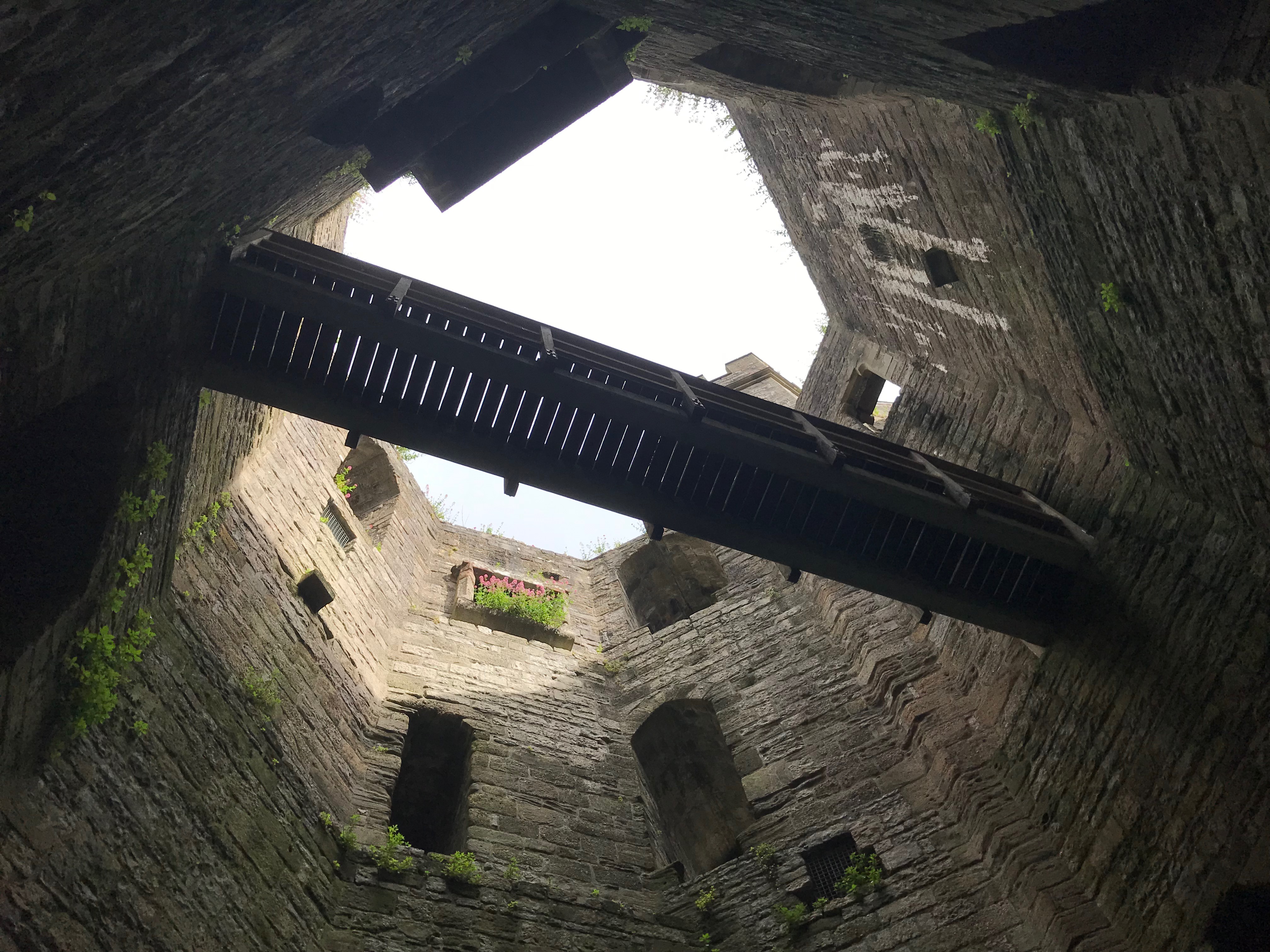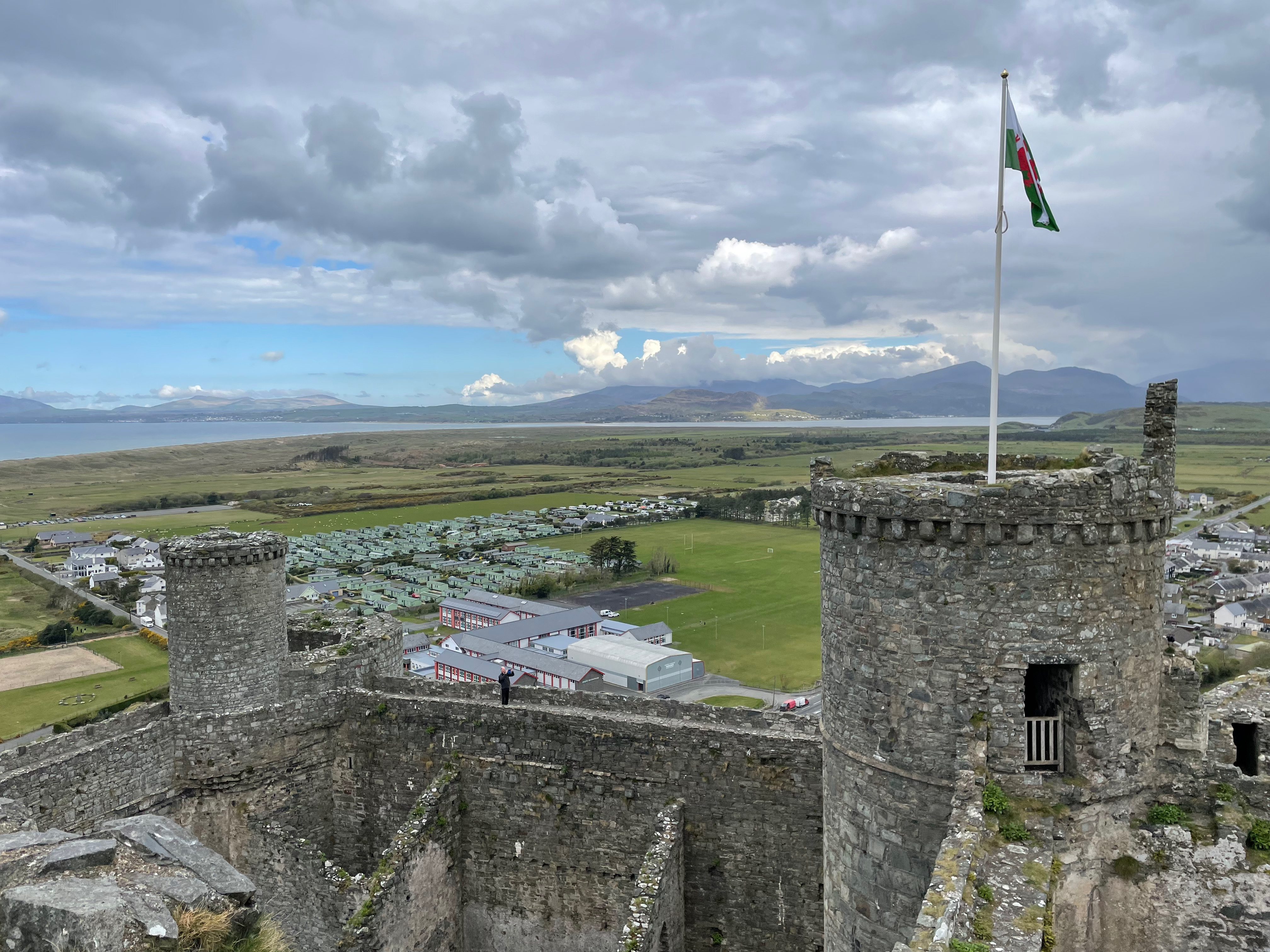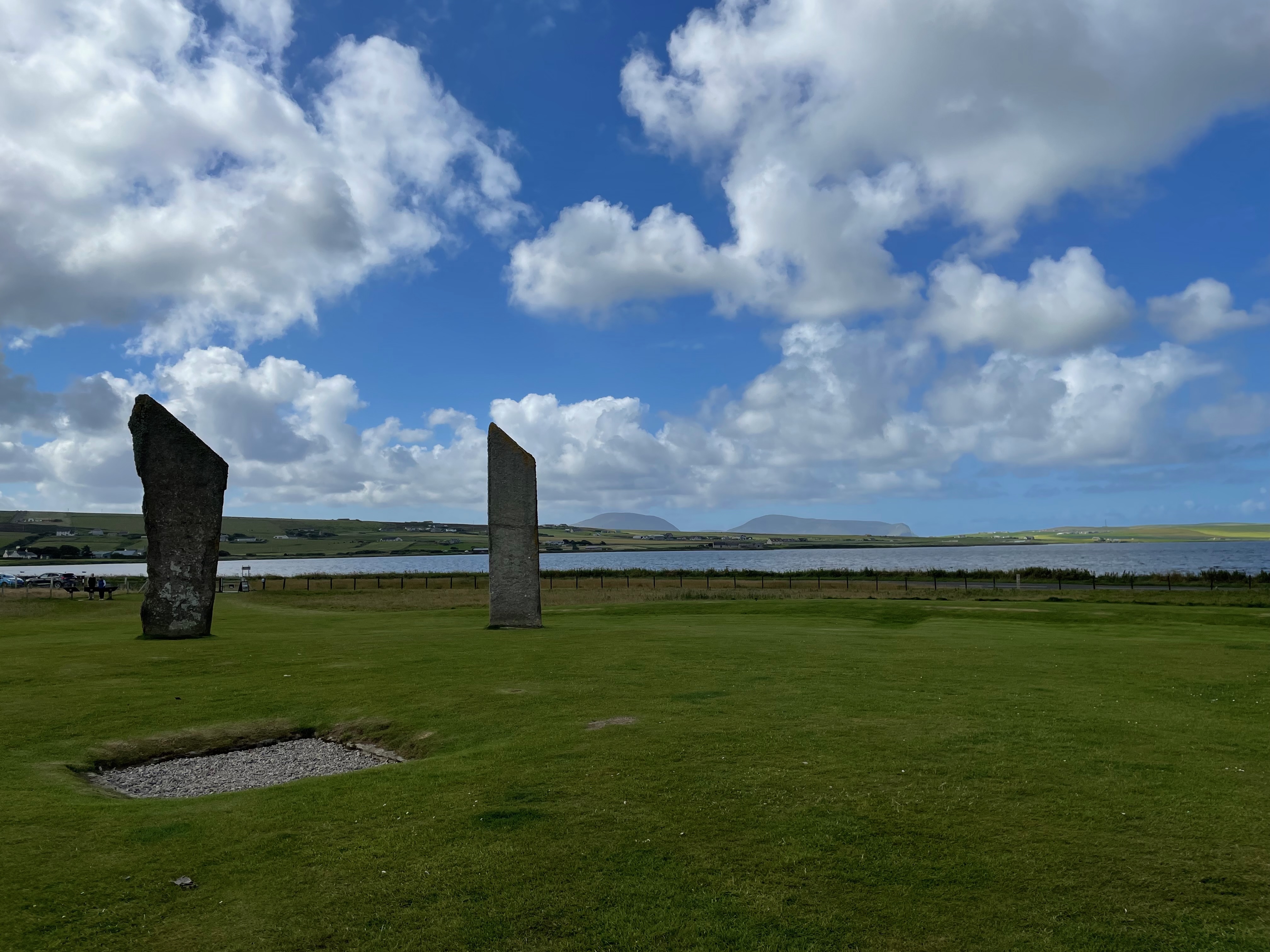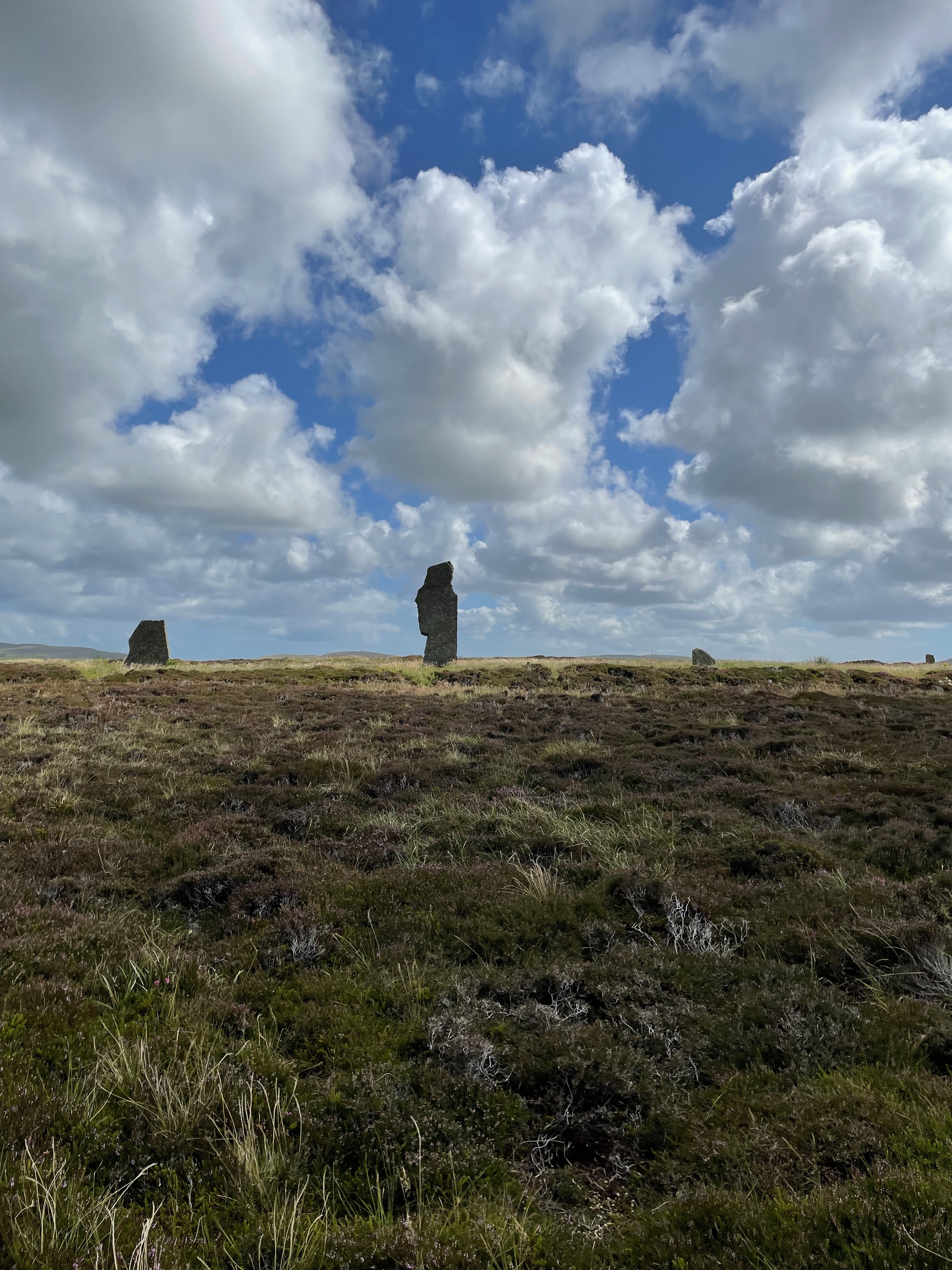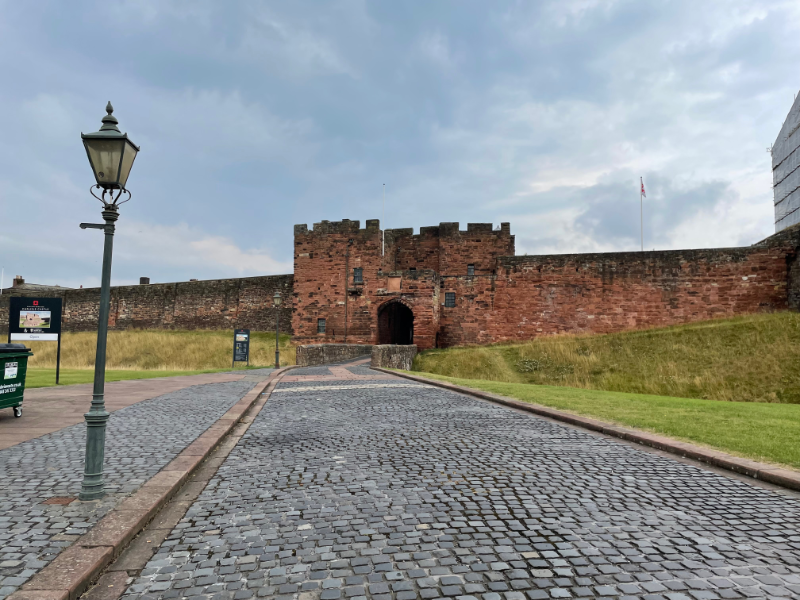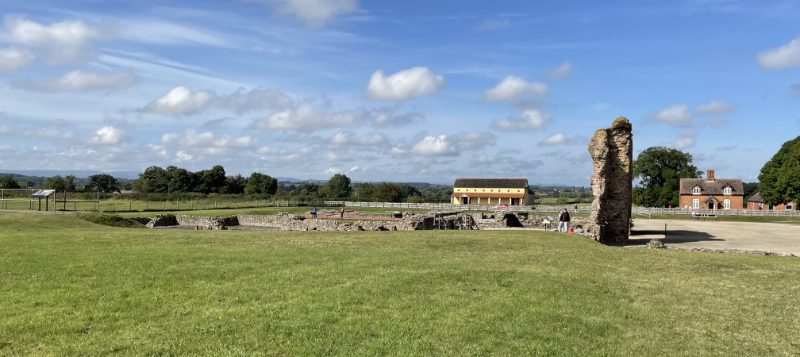
The village of Wroxeter occupies one corner of the Roman city of Viroconium Cornoviorum. English Heritage has preserved an excavation of the substantial baths, next to a modern recreation of a Roman town house. Most of the baths, as is common with Roman remains, had clearly been covered by the landscape but "The Old Work" must have stood visible in arable land and one can't help feeling that the nearby residents of Shrewsbury missed a trick when they didn't loot it for building material.
 ( Pictures under the Cut )
( Pictures under the Cut )Montgomery Canal
Sep. 16th, 2023 06:16 pmWe walked along the Montgomery Canal twice during our holiday - once going north from Welshpool and once south.
 ( Pictures under the Cut )
( Pictures under the Cut )
 ( Pictures under the Cut )
( Pictures under the Cut )Hadrian's Wall: Days 6 & 7
Feb. 14th, 2023 04:31 pmOn our final day we walked from Chollerford to Heddon-on-the-Wall. There wasn't a great deal of wall left to be seen now we had come down from the hillier parts.
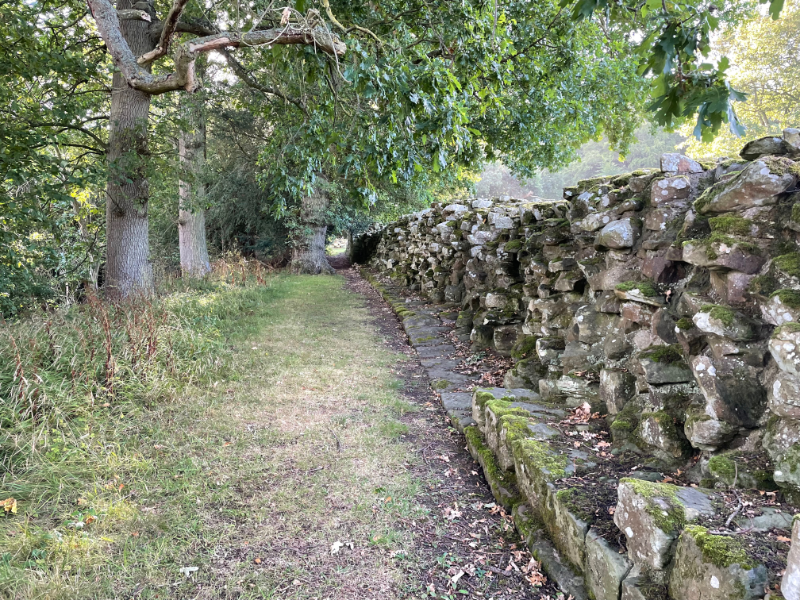
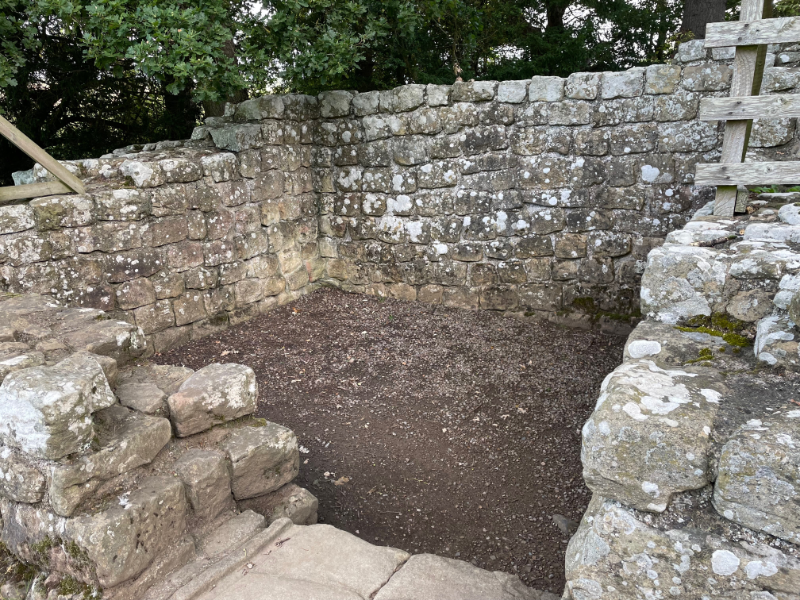
This was our last turret - just after Chollerford. It's more exciting when you are coming in the other direction and it is your first turret.
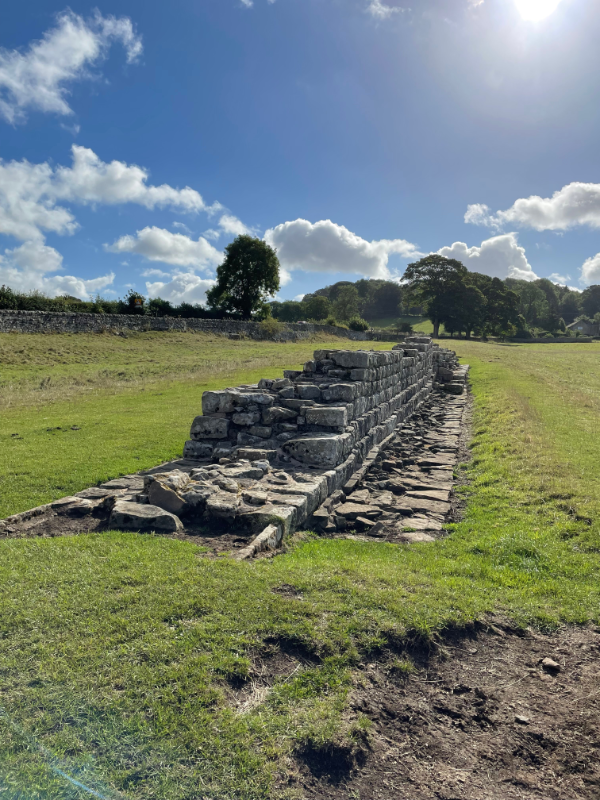
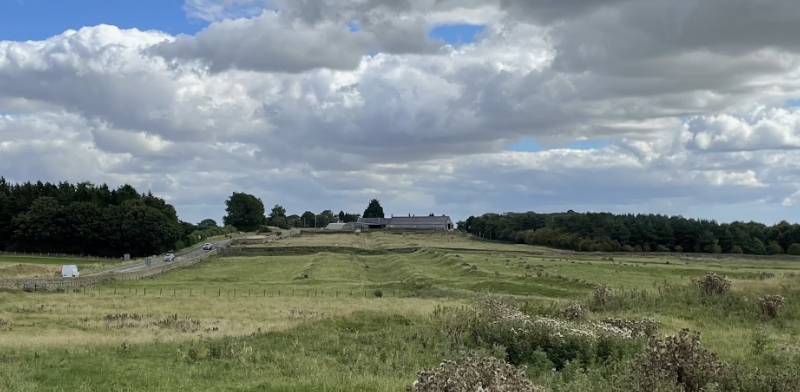
Although there is no wall visible here - the ditch and vallum have left their mark on the landscape visible even after 1900 years.
We got to Heddon-on-the-Wall in good time to meet![[personal profile]](https://www.dreamwidth.org/img/silk/identity/user.png) sir_guinglain for dinner in a pub. We didn't actually visit the wall at Heddon until the next morning.
sir_guinglain for dinner in a pub. We didn't actually visit the wall at Heddon until the next morning.
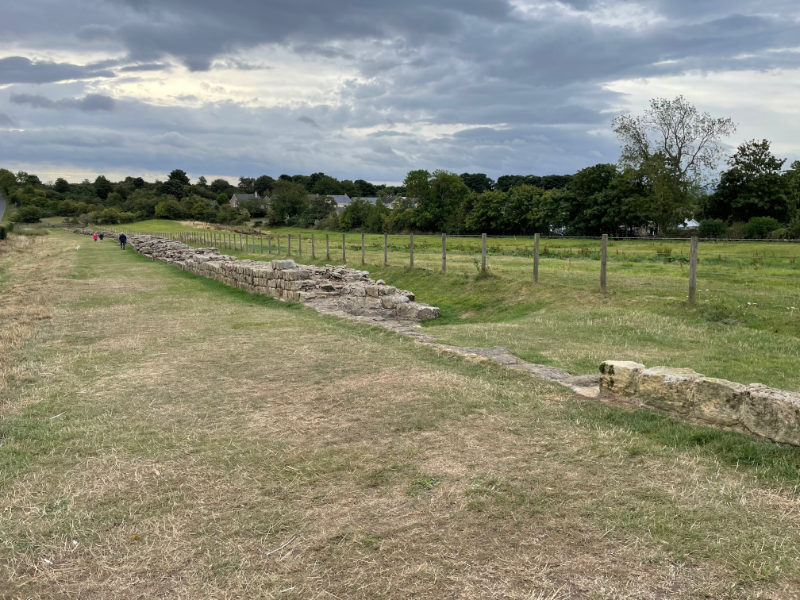
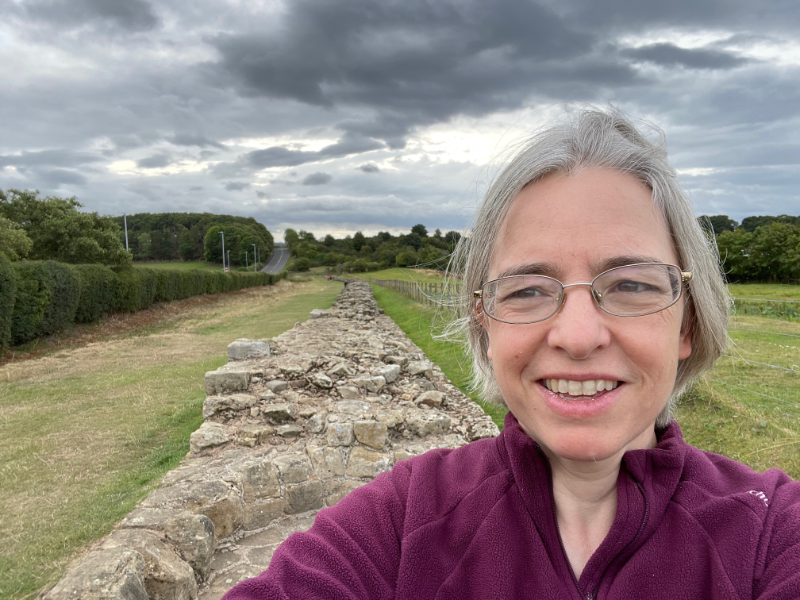
Then we went home.


This was our last turret - just after Chollerford. It's more exciting when you are coming in the other direction and it is your first turret.


Although there is no wall visible here - the ditch and vallum have left their mark on the landscape visible even after 1900 years.
We got to Heddon-on-the-Wall in good time to meet


Then we went home.
Chesters Roman Fort
Feb. 12th, 2023 12:19 pmChesters is probably the most impressive of the Hadrian's Wall forts simply because it has walls that are in many places a good deal higher than the foot or so you see elsewhere.
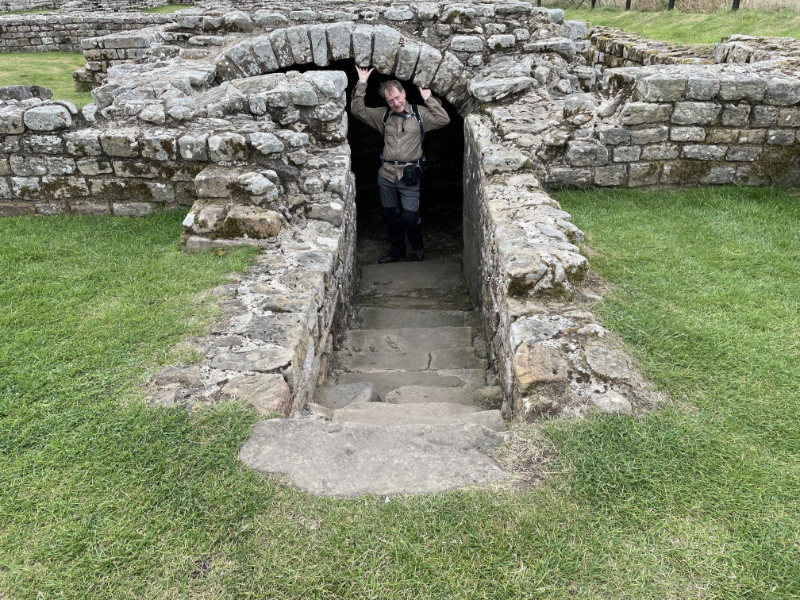
A store room.
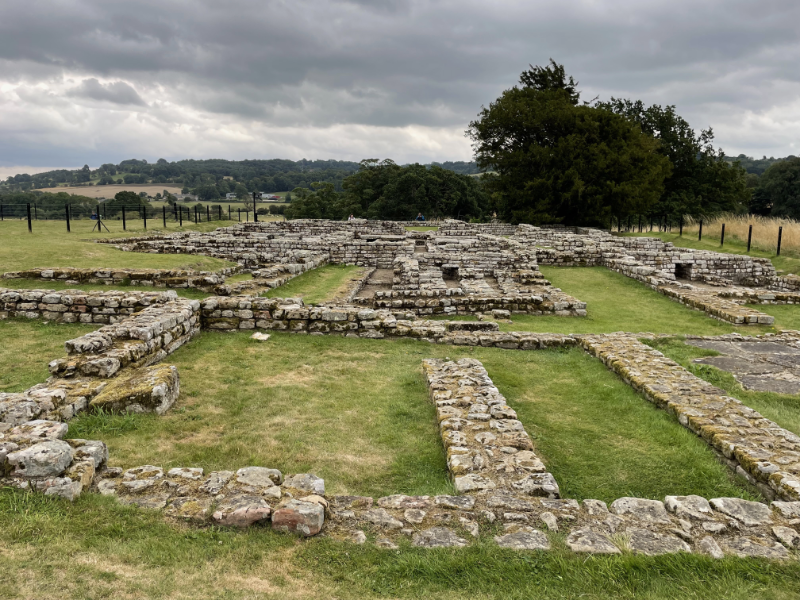

The bath house complex by the river is particularly impressive.
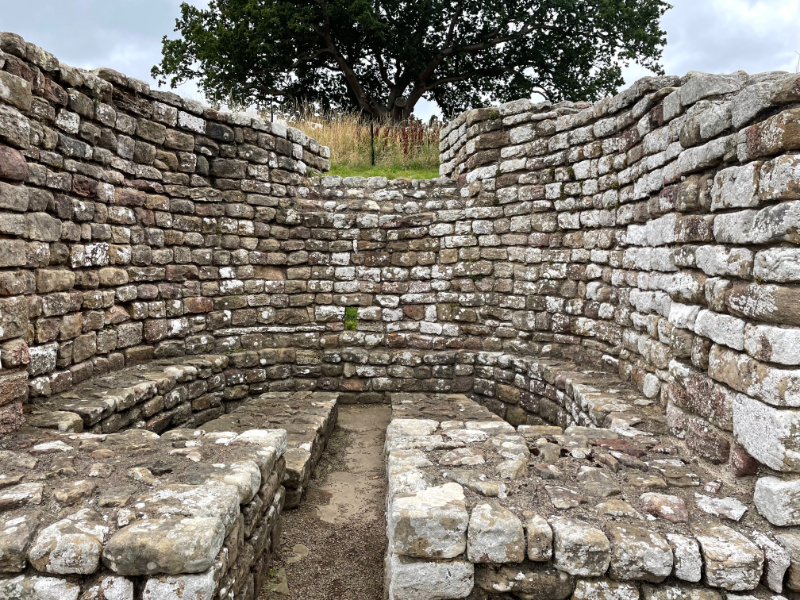
I think this is the hot steam room - presumably a bit like a sauna.
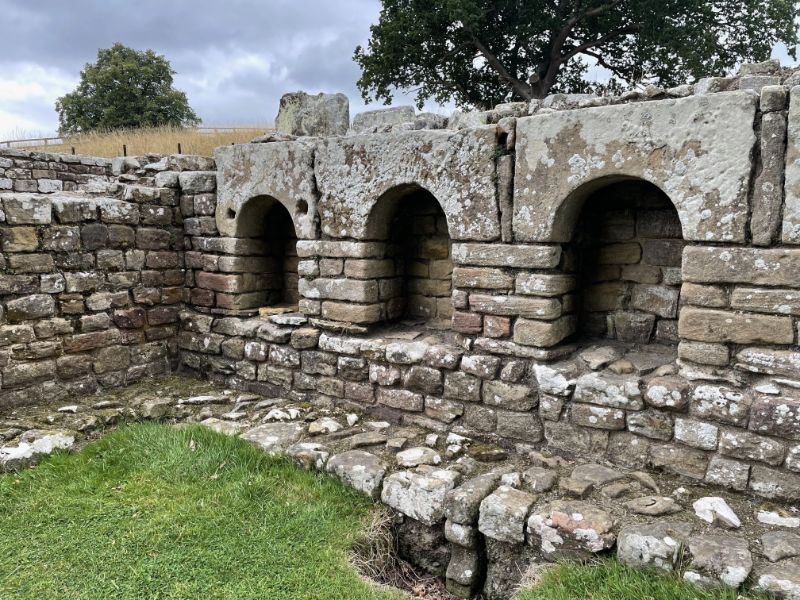
These were the lockers where you put your clothes before entering the complex.
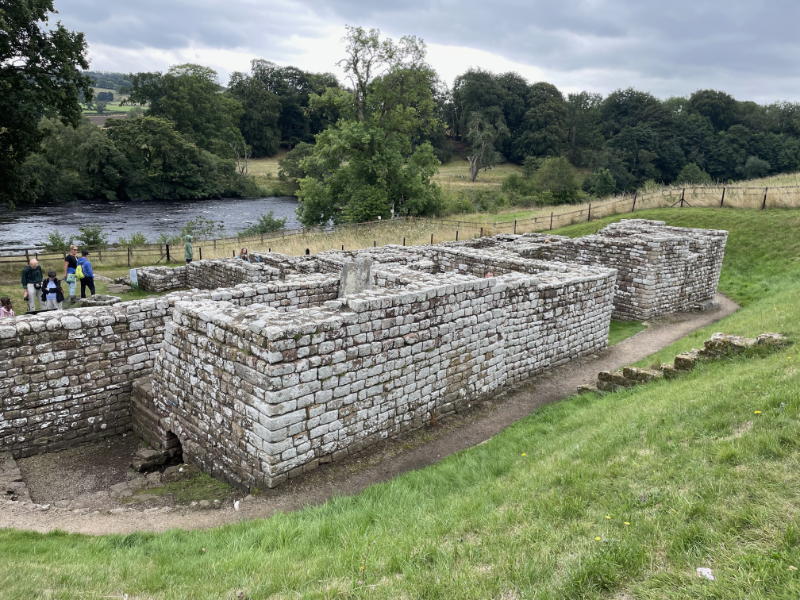

A store room.


The bath house complex by the river is particularly impressive.

I think this is the hot steam room - presumably a bit like a sauna.

These were the lockers where you put your clothes before entering the complex.

Hadrian's Wall: Day 5
Feb. 3rd, 2023 05:13 pmDay 5 was a ridiculously short walk. The intention had been to take a side-walk down to Corbridge as part of the day's walking, but I'd made a mistake and the side-walk left the main path close to Heddon-on-the-Wall (at the end of the Day 6 planned walk) not close to Chollerford (the end of the Day 5 walk). In the event therefore, even taking things slowly we were in Chollerford by lunch time.
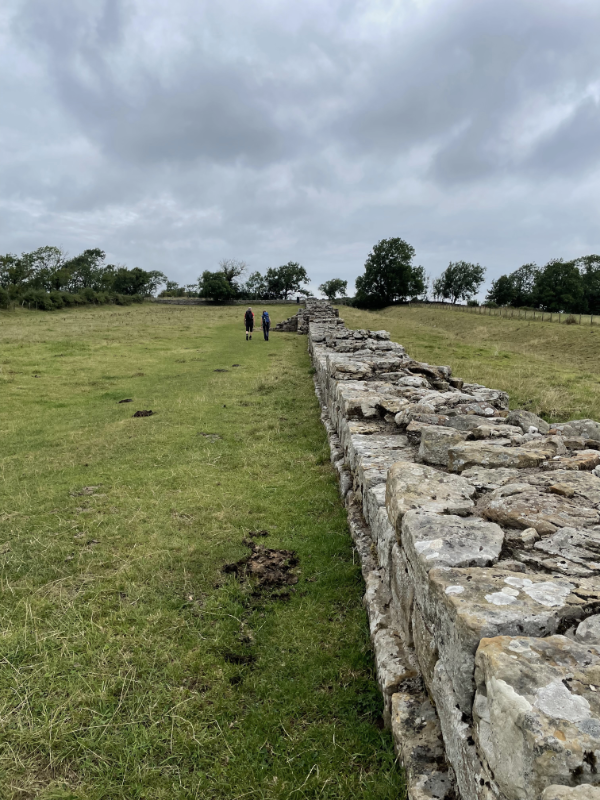
One of the places we lingered - or at least lingered as much as one can really, when viewing a stone building in a field, was a Temple to Mithras close to our B&B at the start of the day.
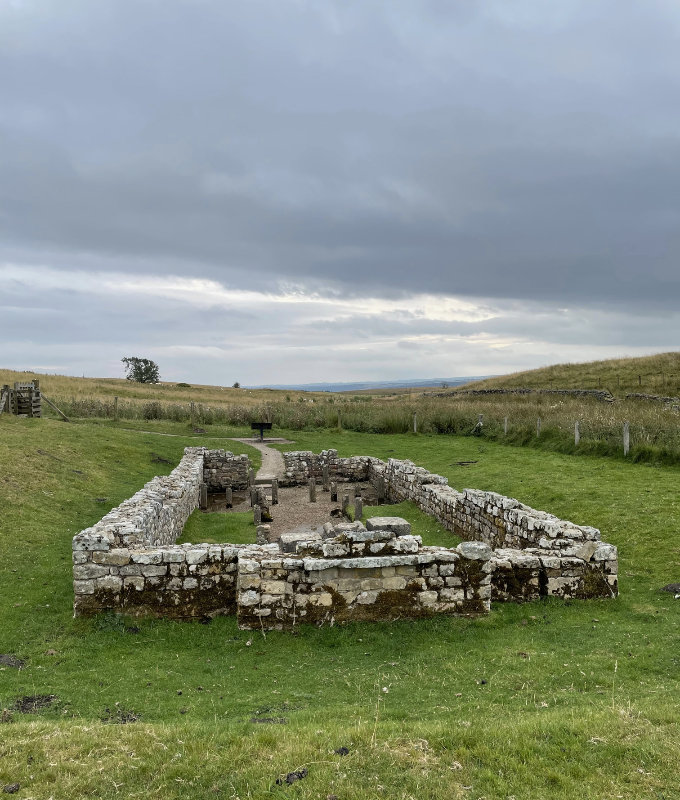
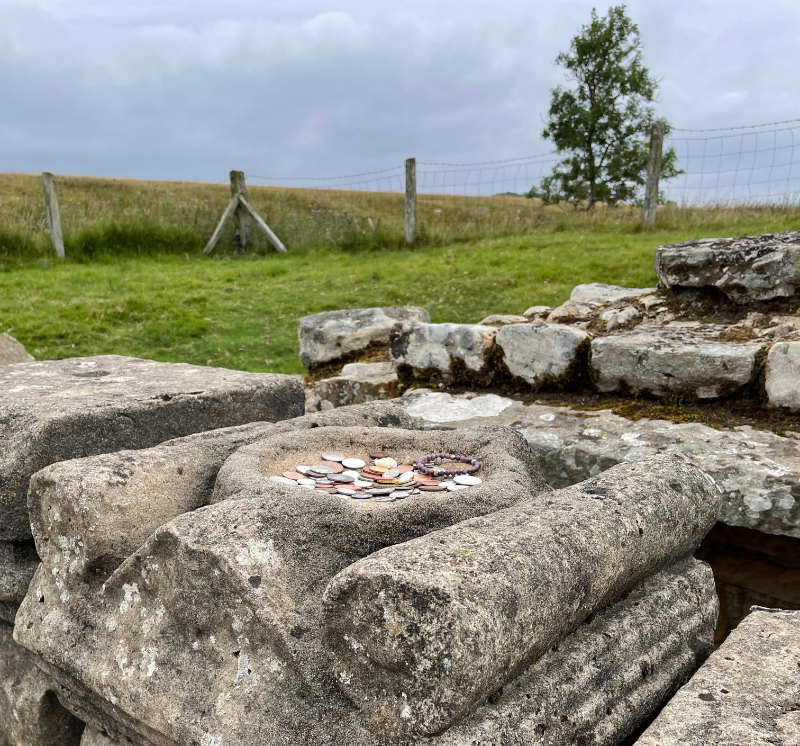
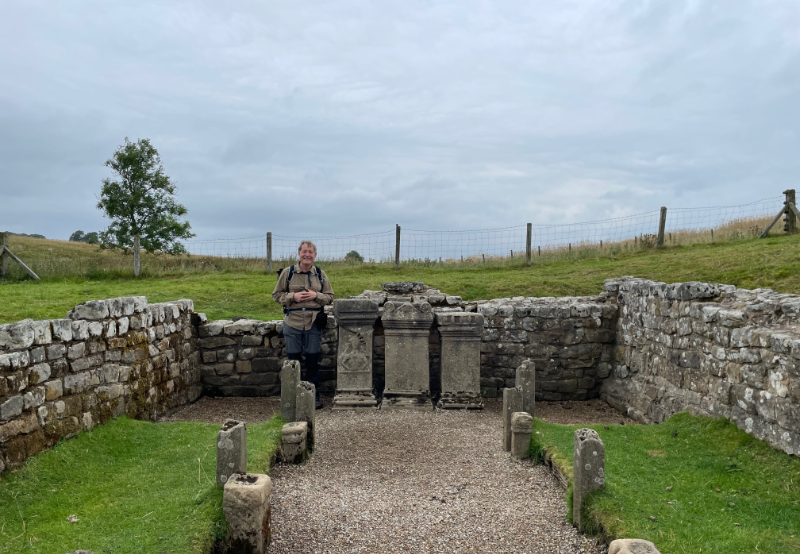
All the carved stones were, in fact, reproductions. The originals were in the museum at Chester fort.
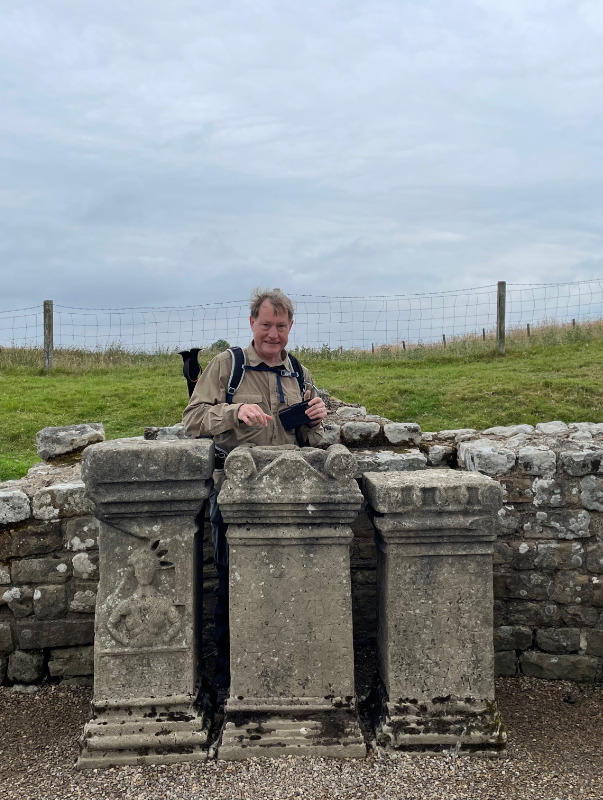
Once we got to Chollerford and deposited our back-packs at the hotel where we had upgraded our room to a luxury suite - largely because they offered such an upgrade as part of some weird pretend auction - anyway we got it for £9. We went to see the footings of the Roman bridge across the Tyne opposite Chesters (we also visited Chesters but I'll do that as a separate post). This wasn't in the guide-book for the walk for some reason so we'd missed it last time around. The Tyne has moved so the bridge footings are now some distance from the river.
 ( Cut for Roman Graffiti which I hesitate to call obscene since the Roman's thought it was a symbol of good luck. )
( Cut for Roman Graffiti which I hesitate to call obscene since the Roman's thought it was a symbol of good luck. )
Despite being called Chollerford - there was a bridge.
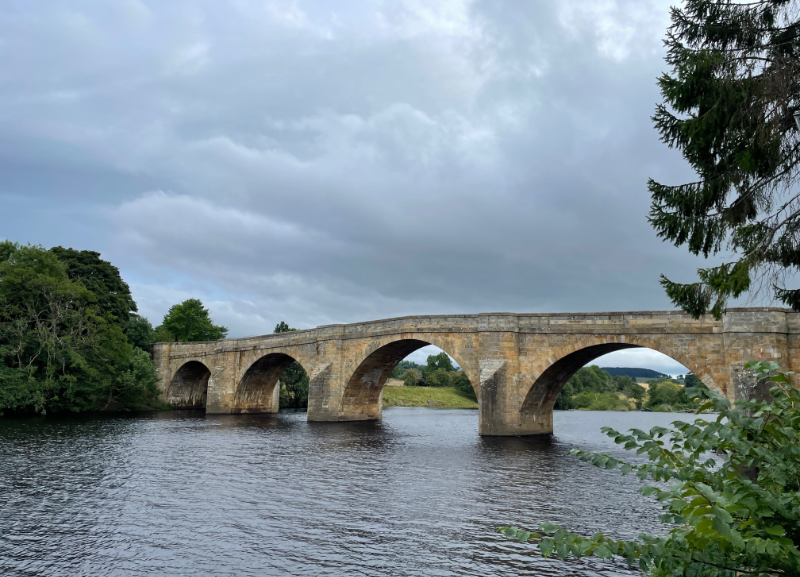

One of the places we lingered - or at least lingered as much as one can really, when viewing a stone building in a field, was a Temple to Mithras close to our B&B at the start of the day.



All the carved stones were, in fact, reproductions. The originals were in the museum at Chester fort.

Once we got to Chollerford and deposited our back-packs at the hotel where we had upgraded our room to a luxury suite - largely because they offered such an upgrade as part of some weird pretend auction - anyway we got it for £9. We went to see the footings of the Roman bridge across the Tyne opposite Chesters (we also visited Chesters but I'll do that as a separate post). This wasn't in the guide-book for the walk for some reason so we'd missed it last time around. The Tyne has moved so the bridge footings are now some distance from the river.
 ( Cut for Roman Graffiti which I hesitate to call obscene since the Roman's thought it was a symbol of good luck. )
( Cut for Roman Graffiti which I hesitate to call obscene since the Roman's thought it was a symbol of good luck. )Despite being called Chollerford - there was a bridge.

Housteads main claim to fame as a wall fort is the excellent preservation of its latrines. However, in celebration of 1900 years of Hadrian's Wall it had acquired a controversial art installation in the form of a colourful gatehouse decorated with comments from workshop sessions on the Wall. B. and I quite liked it but could see that if this was your only visit to Housteads you might not have wanted the whole thing dominated by a mock gatehouse.
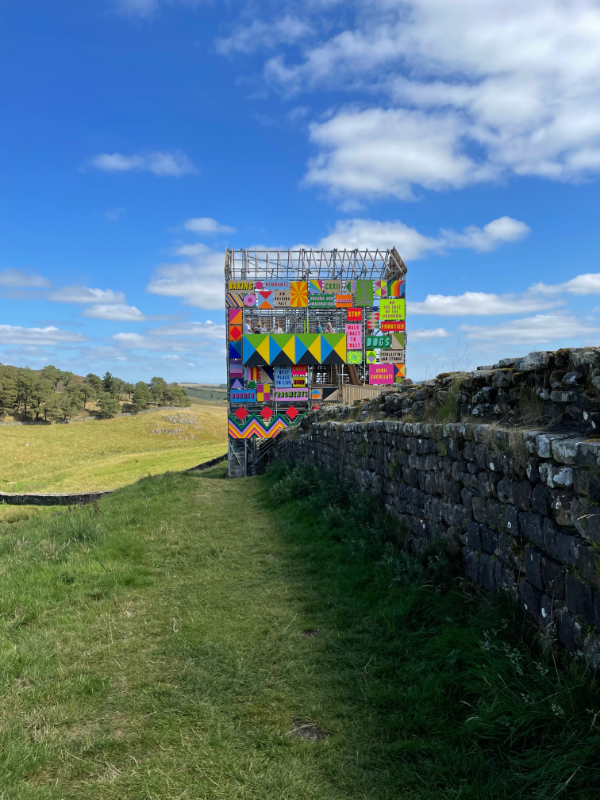
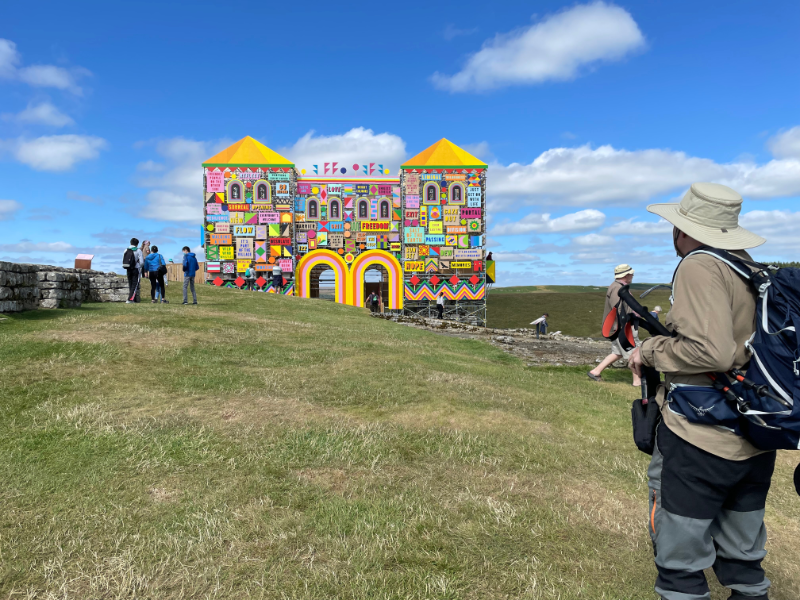
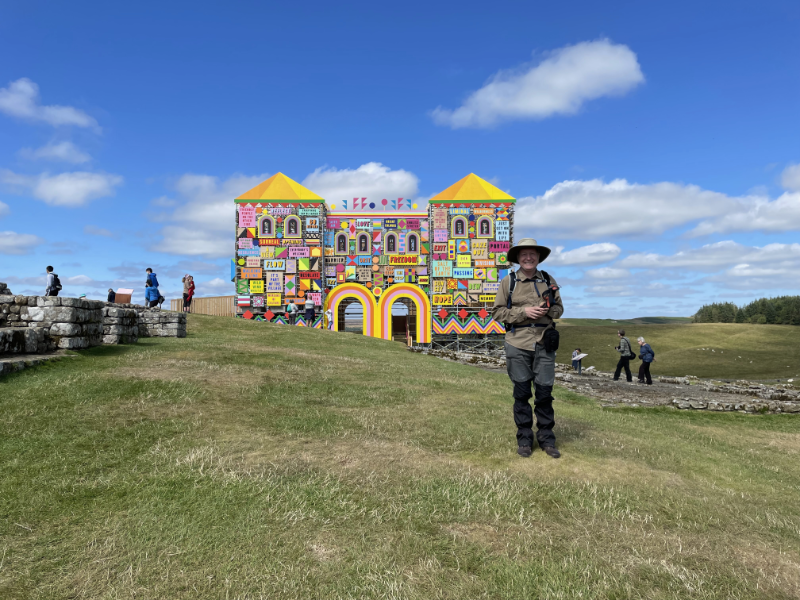
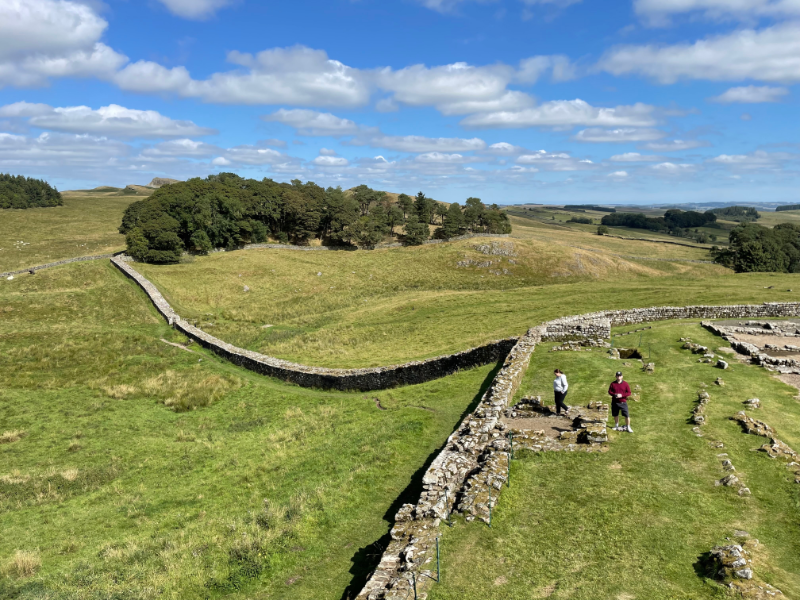
This is the view from up within the gate house.
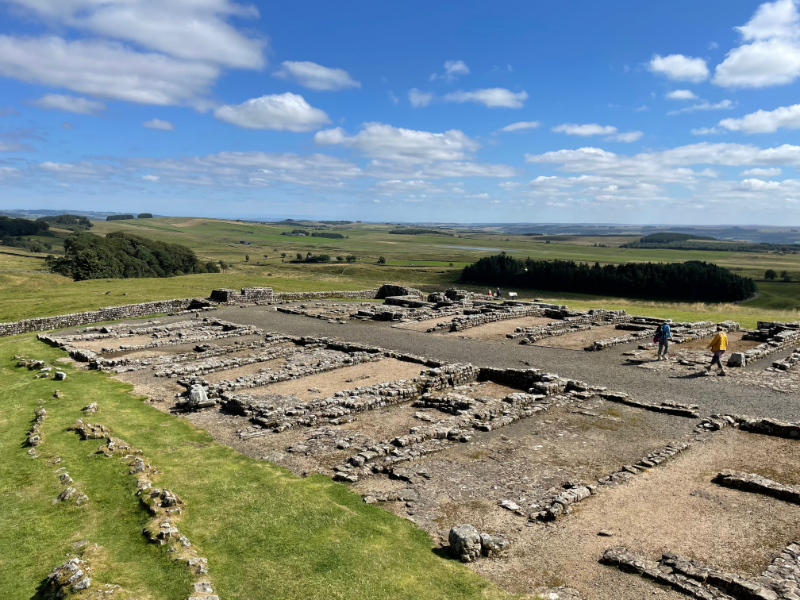
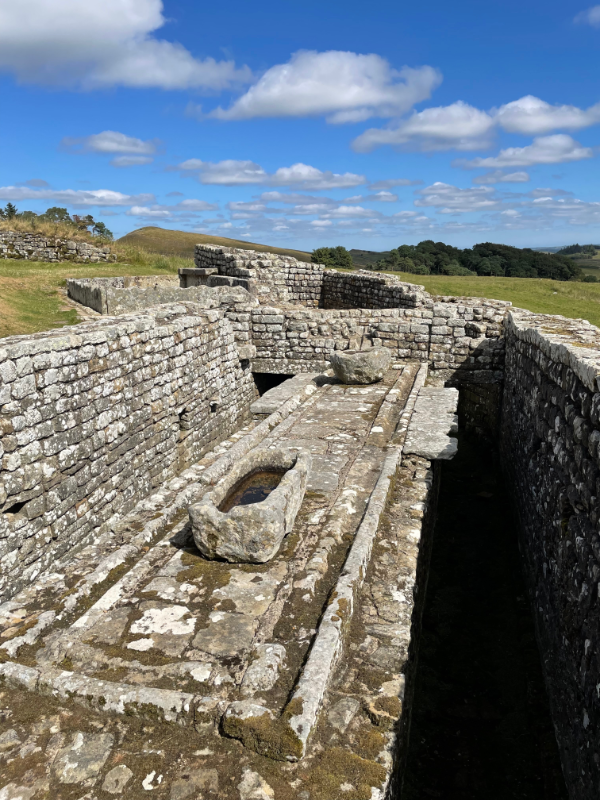
The latrines.
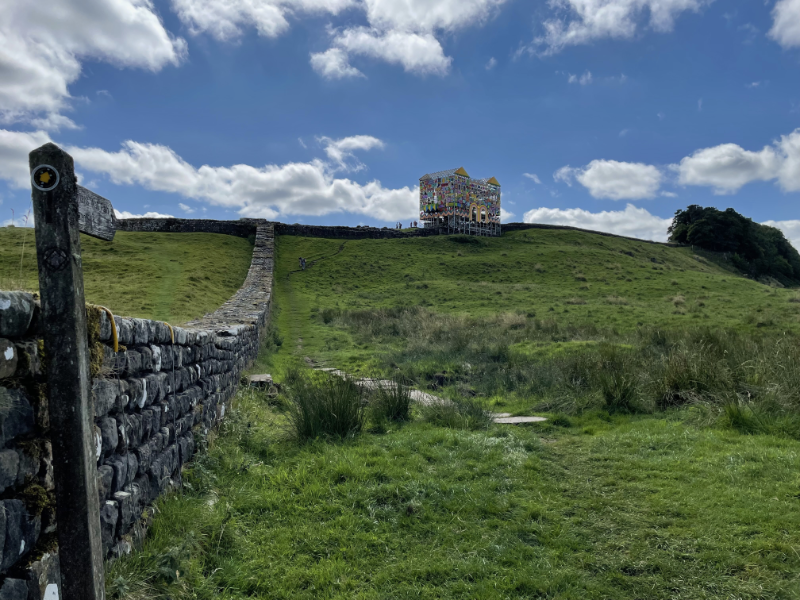




This is the view from up within the gate house.


The latrines.

Hadrian's Wall: Day 4
Jan. 22nd, 2023 02:17 pmDay 4 our our walk started from our Hotel, The Twice Brewed Inn at Once Brewed.
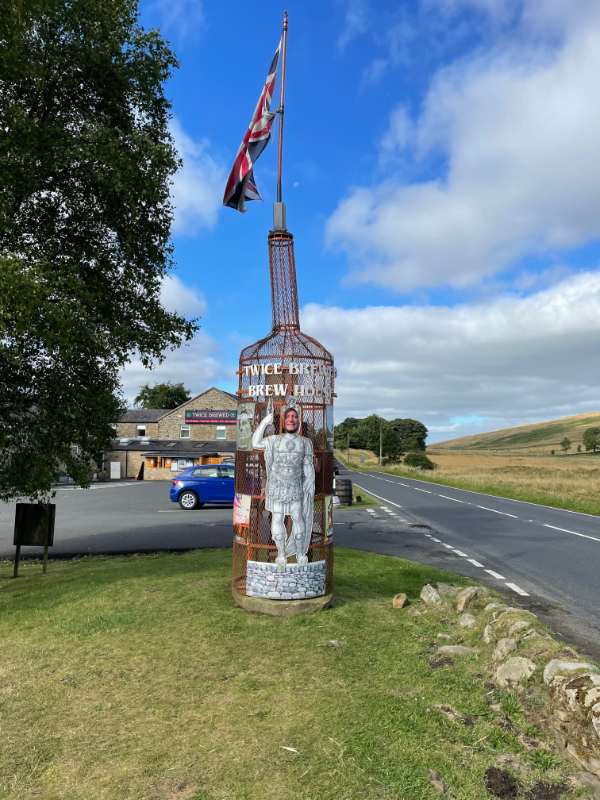
We then took a detour to Vindolanda. A large roman fort slightly off the wall which is owned by a private trust, not English Heritage and has an active dig on site, plus museum, tea house, fake roman temple and all the works. Strangely I didn't take many photos.
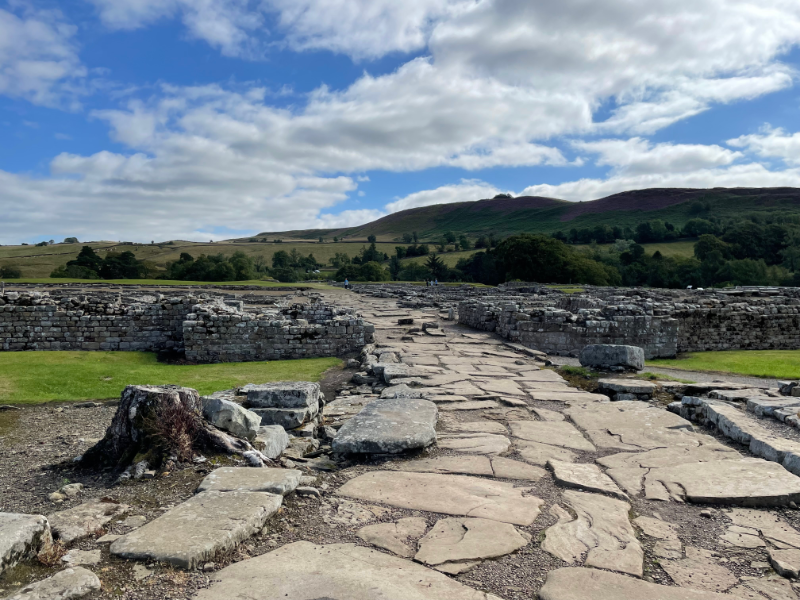
This is the main entrance way to the fort proper.
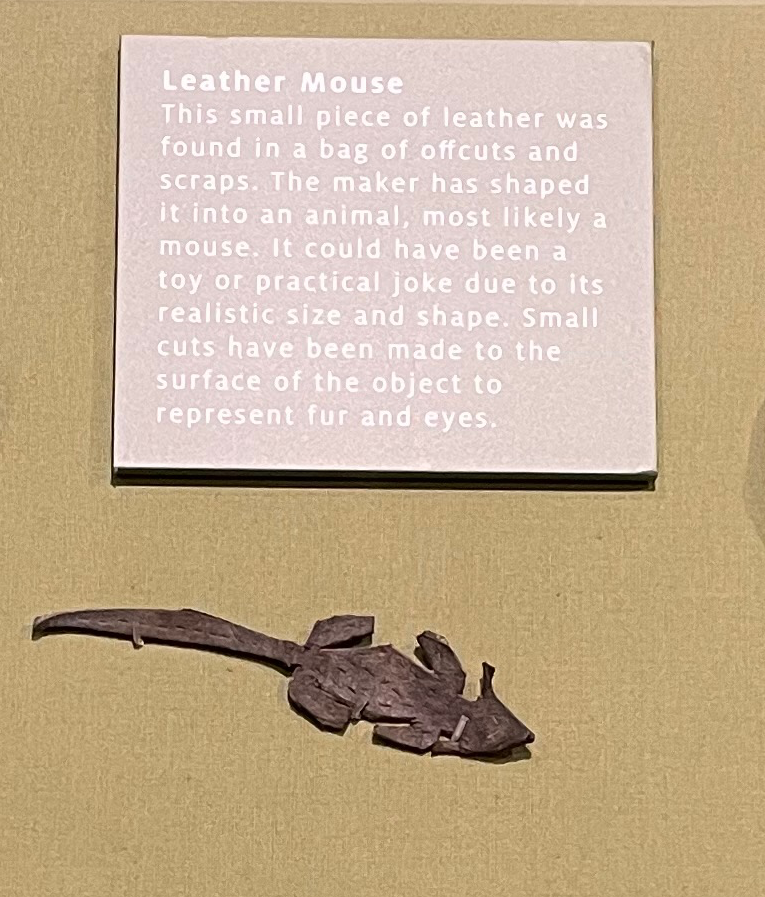
After that we went back up to the wall to walk to our next B&B. Our walk included Sycamore Gap made famous by Robin Hood: Prince of Thieves (albeit the film locates it somewhere between Dover and Nottingham). When we came past previously there was no one there but this time it was full of people having picnics in the sun. This is not terribly surprising since it is a short walk from one of the main car parks on the wall, if anything it was odd that we didn't see people the previous time, but I think we came past much earlier in the day. We had noticed the last time a small sycamore in a circular stone enclosure, presumably being grown to replace the big one at some point. We were sad to see this time that the enclosure had been dismantled and the baby tree was nowhere to be seen.
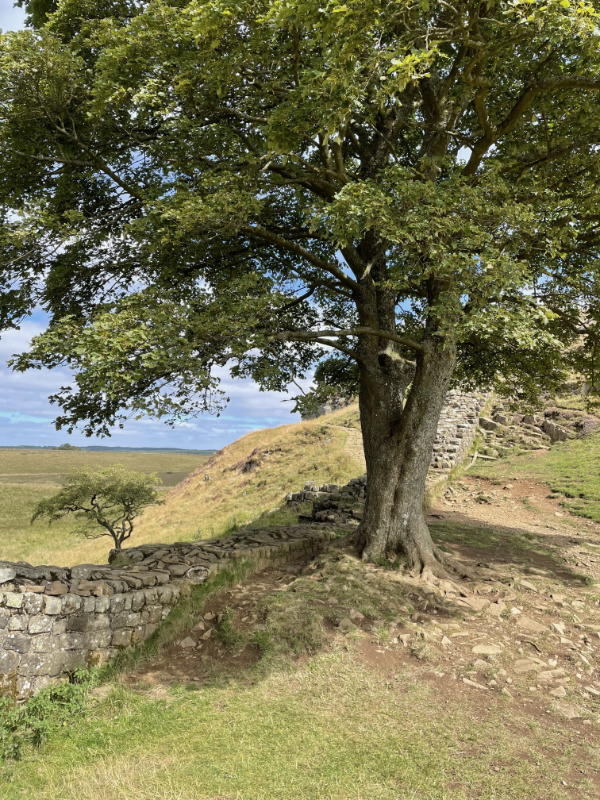
This angle was very carefully chosen so as not to show picnickers.
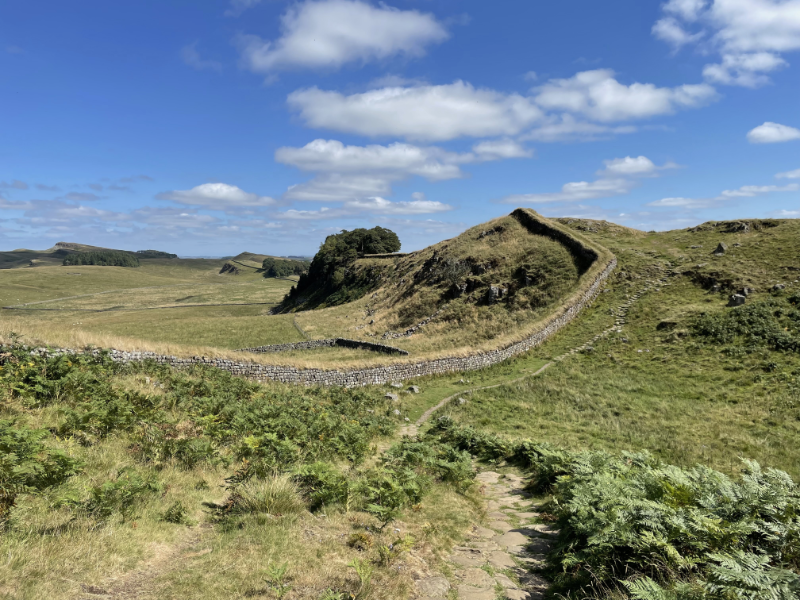
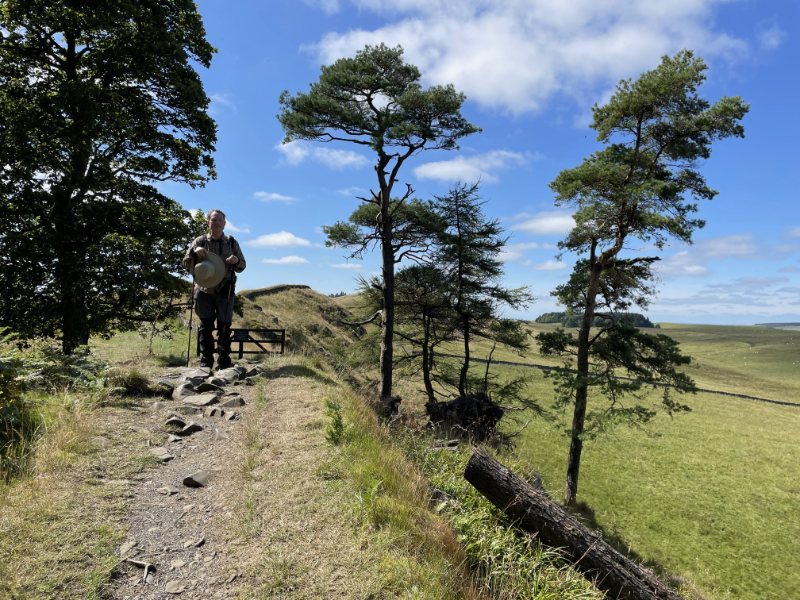
In the walk up to Housteads Fort (more on which anon) there is a stretch of wall you are "allowed" to walk on.

We then took a detour to Vindolanda. A large roman fort slightly off the wall which is owned by a private trust, not English Heritage and has an active dig on site, plus museum, tea house, fake roman temple and all the works. Strangely I didn't take many photos.

This is the main entrance way to the fort proper.

After that we went back up to the wall to walk to our next B&B. Our walk included Sycamore Gap made famous by Robin Hood: Prince of Thieves (albeit the film locates it somewhere between Dover and Nottingham). When we came past previously there was no one there but this time it was full of people having picnics in the sun. This is not terribly surprising since it is a short walk from one of the main car parks on the wall, if anything it was odd that we didn't see people the previous time, but I think we came past much earlier in the day. We had noticed the last time a small sycamore in a circular stone enclosure, presumably being grown to replace the big one at some point. We were sad to see this time that the enclosure had been dismantled and the baby tree was nowhere to be seen.

This angle was very carefully chosen so as not to show picnickers.


In the walk up to Housteads Fort (more on which anon) there is a stretch of wall you are "allowed" to walk on.
Birdoswald Fort
Jan. 2nd, 2023 10:46 amBirdoswald was our first fort on the walk. We'd skipped viewing it last time because we reached it at the absolute low point in our walk, where it looked like B's knees were going to give out, I had terrible blisters and when we stopped in the tea room they gave us squirty cream with our scones and jam.
The tea room and visitor centre had been renovated in the intervening years (though we didn't risk the scones). There was a nice short film about Hadrian's wall as well as Lego models of turrets, milecastles, curtain wall and a Roman Bridge together with (albeit sketchy) instructions. I've photographed these, though I haven't yet built Hadrian's wall myself.
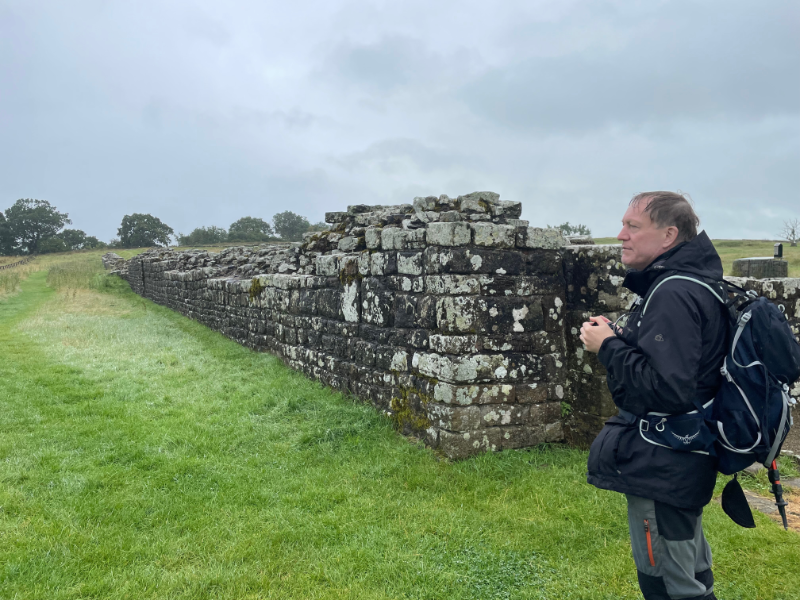
To be honest, the forts later in the walk have more to see, but we could still follow the outline of the fort's walls.
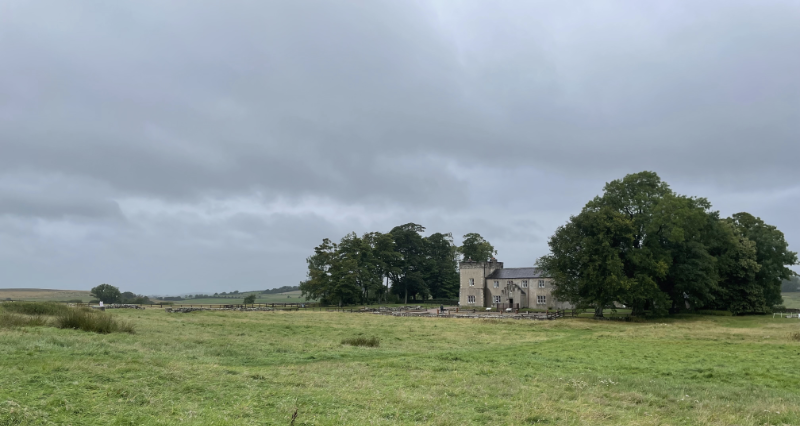
What Birdoswald does have is a 18th/19th century farmhouse (complete with mock tower) in the middle of it. I thought it was a youth hostel and had looking into booking us a night there, but it turned out to be more a holiday house kind of thing - easy enough to book if there are 10 of you wanting to stay for a week - less attractive if it is two of you wanting to stay for the night.
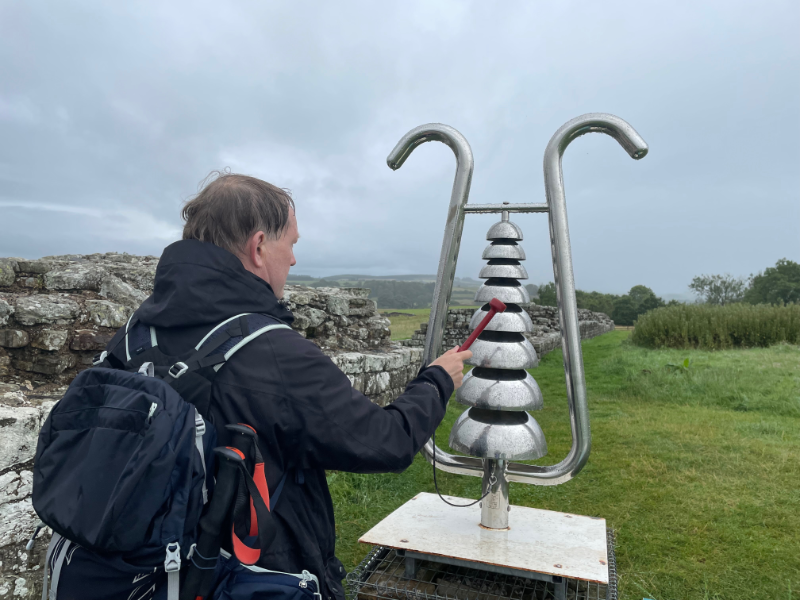
I think this was supposed to be some kind of Roman instrument. It was located at the far entrance of the fort.
The tea room and visitor centre had been renovated in the intervening years (though we didn't risk the scones). There was a nice short film about Hadrian's wall as well as Lego models of turrets, milecastles, curtain wall and a Roman Bridge together with (albeit sketchy) instructions. I've photographed these, though I haven't yet built Hadrian's wall myself.

To be honest, the forts later in the walk have more to see, but we could still follow the outline of the fort's walls.

What Birdoswald does have is a 18th/19th century farmhouse (complete with mock tower) in the middle of it. I thought it was a youth hostel and had looking into booking us a night there, but it turned out to be more a holiday house kind of thing - easy enough to book if there are 10 of you wanting to stay for a week - less attractive if it is two of you wanting to stay for the night.

I think this was supposed to be some kind of Roman instrument. It was located at the far entrance of the fort.
Hadrian's Wall: Day 3
Jan. 1st, 2023 04:22 pmOur longest walk - also the wettest and with significant up-and-down!!
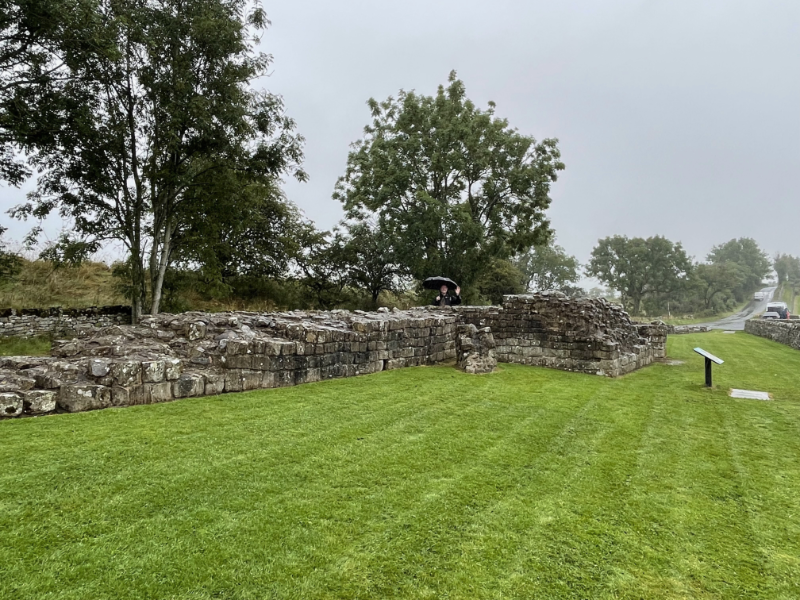
We began encountering sections of wall in earnest, early on Day 3. This was our first bit. You can see the remains of a turret that were built every third of a mile along the wall.
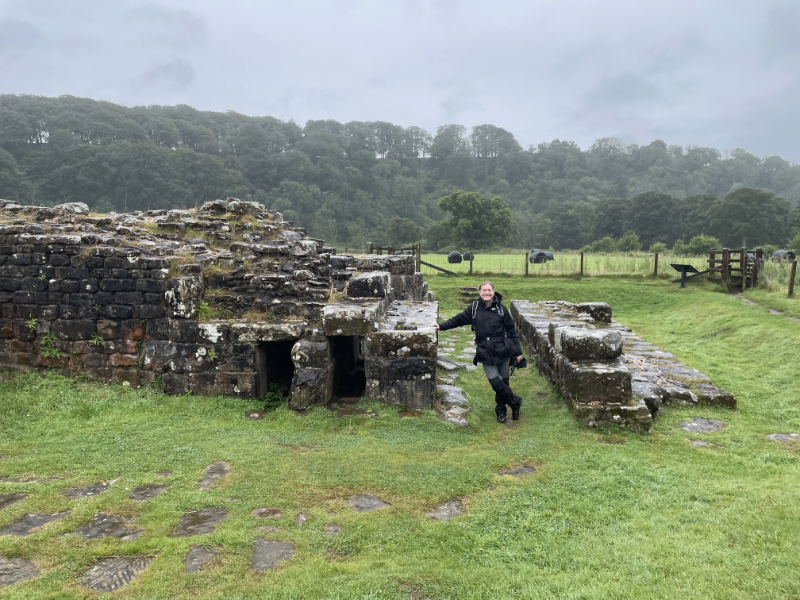
These are the footings of the Roman bridge across the river Eden. The river itself has moved which is why B. isn't knee deep in water.
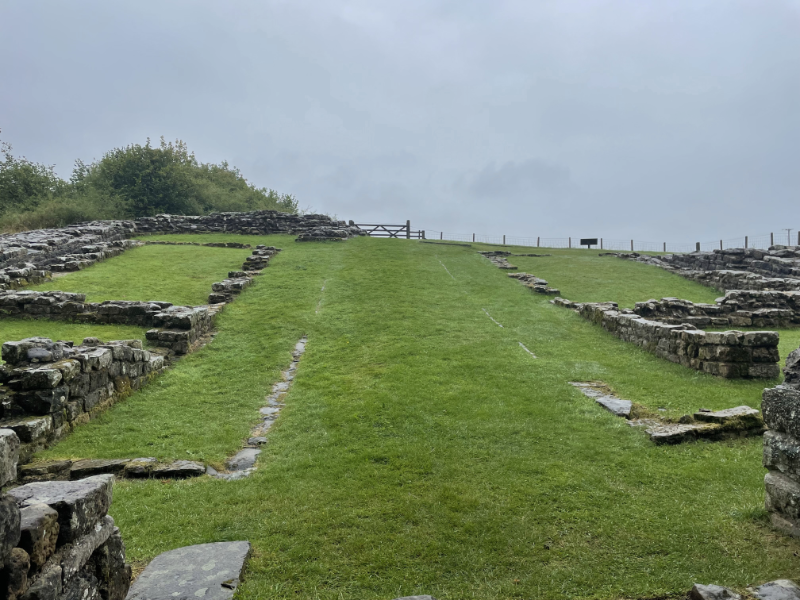
This was our first significant milecastle.
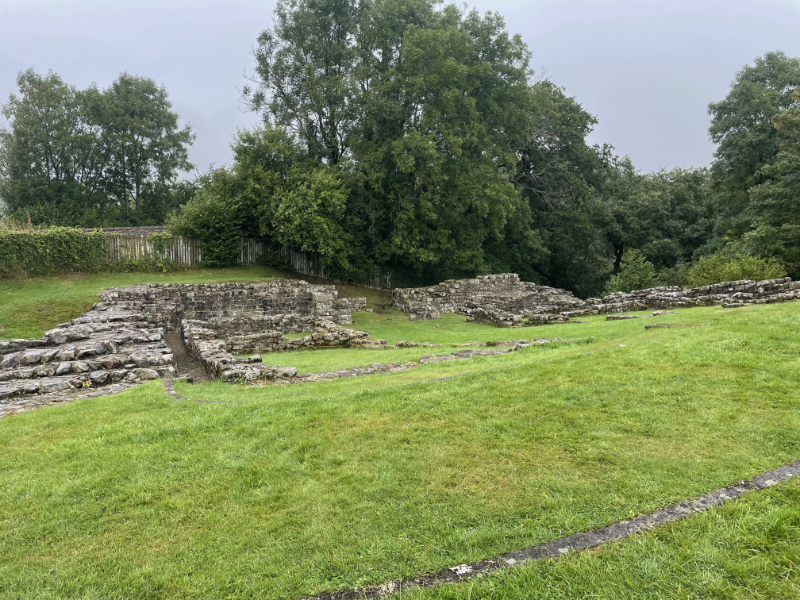
The same milecastle from the other side.
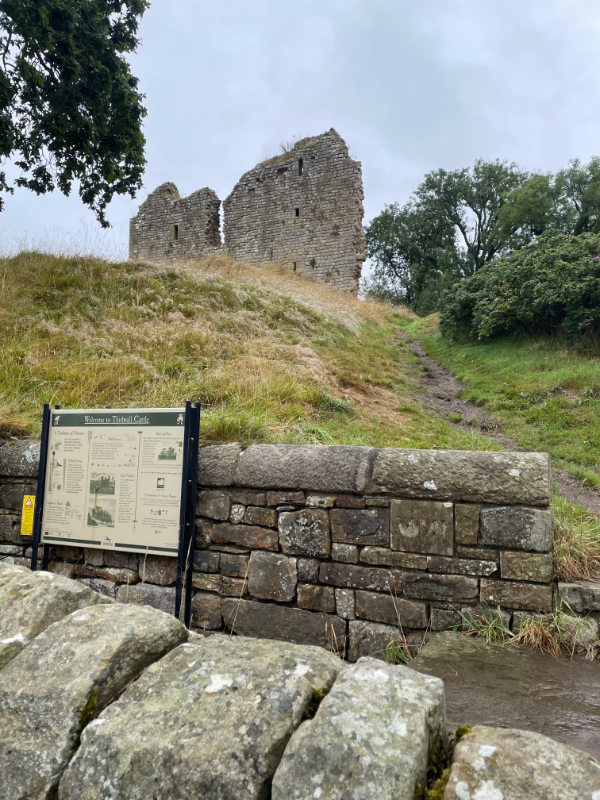
Thirwell Castle stands more or less at the point where the walk stops being through fields and villages and goes up and out onto open crags. We debated taking a look at the castle, but were aware we had a long way still to walk and had a deadline since we were booked into a stargazing event at our accommodation.

And we were out onto the crags where the remains of the wall run for long stretches.
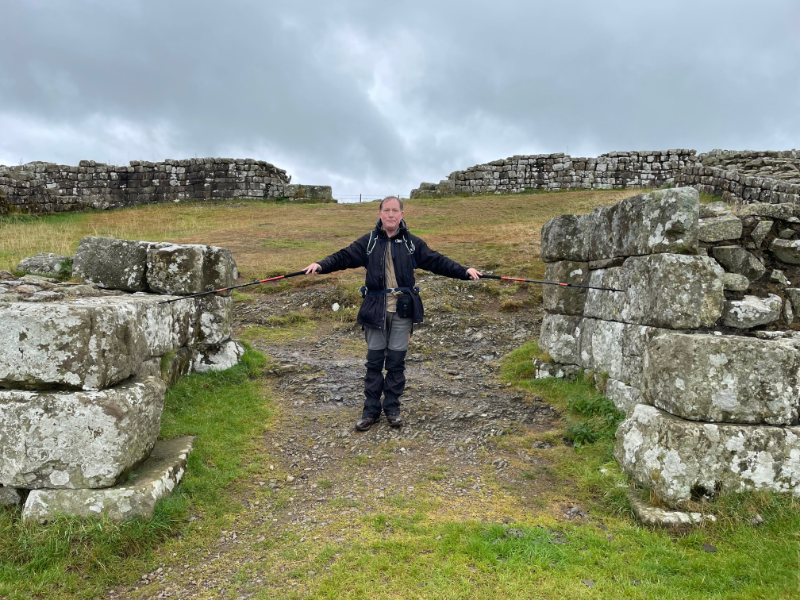
Another milecastle.
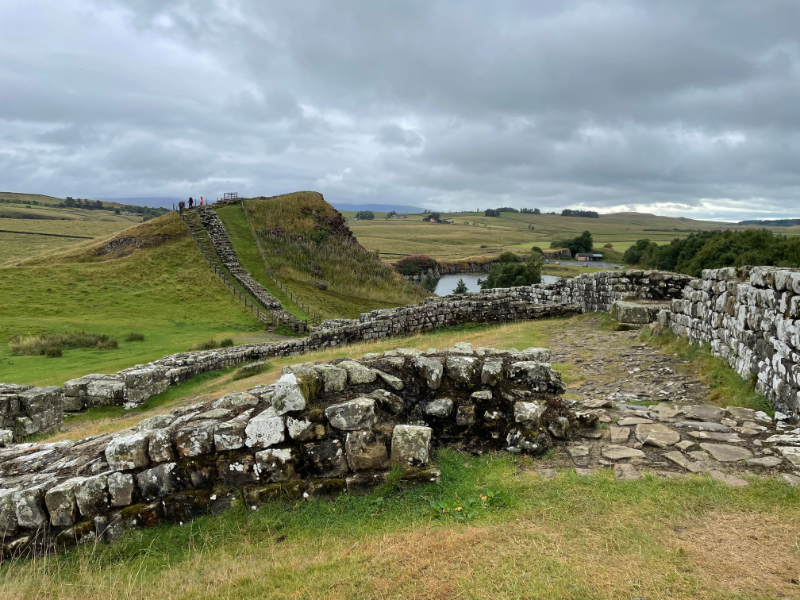
We walked this section to Steel Rigg car park where we then descended to the Twice Brewed Inn at Once Brewed. We had booked ourselves in to the aforementioned Stargazing event but it was overcast and we were tired. B. had also had a last minute work emergency and was frantically trying to pull images and documentation together for someone. After an hour in which the man running it bravely kept us entertained with slide shows of astronomical phenomena and pieces of meteorite, we went back to our room so B. could send off his info and I could read in bed. We think the clouds did part briefly later on so if we had stayed we might have seen something but we didn't regret it too much.

We began encountering sections of wall in earnest, early on Day 3. This was our first bit. You can see the remains of a turret that were built every third of a mile along the wall.

These are the footings of the Roman bridge across the river Eden. The river itself has moved which is why B. isn't knee deep in water.

This was our first significant milecastle.

The same milecastle from the other side.

Thirwell Castle stands more or less at the point where the walk stops being through fields and villages and goes up and out onto open crags. We debated taking a look at the castle, but were aware we had a long way still to walk and had a deadline since we were booked into a stargazing event at our accommodation.

And we were out onto the crags where the remains of the wall run for long stretches.

Another milecastle.

We walked this section to Steel Rigg car park where we then descended to the Twice Brewed Inn at Once Brewed. We had booked ourselves in to the aforementioned Stargazing event but it was overcast and we were tired. B. had also had a last minute work emergency and was frantically trying to pull images and documentation together for someone. After an hour in which the man running it bravely kept us entertained with slide shows of astronomical phenomena and pieces of meteorite, we went back to our room so B. could send off his info and I could read in bed. We think the clouds did part briefly later on so if we had stayed we might have seen something but we didn't regret it too much.
Carlisle Cathedral
Dec. 30th, 2022 01:49 pm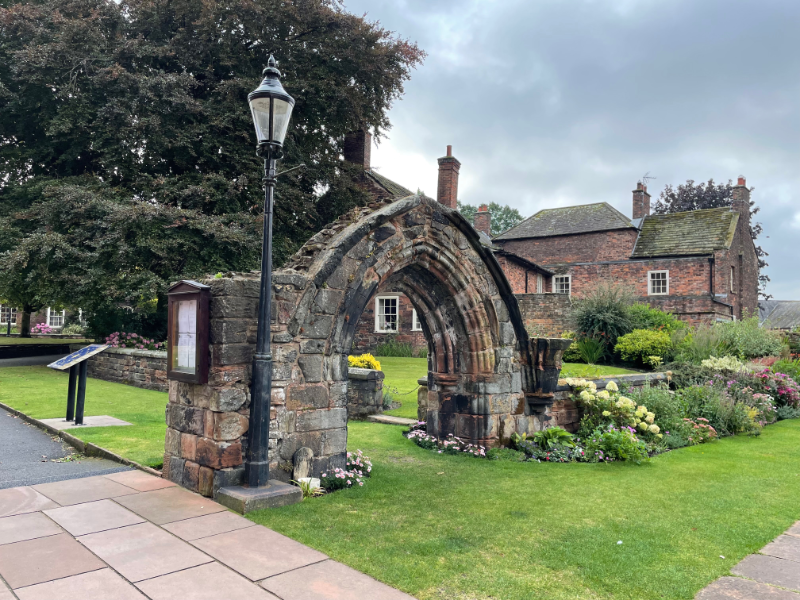
The grounds of Carlisle Cathedral were quite picturesque. It's not a large building (as cathedral's go) and we walked all round it trying to find the entrance.
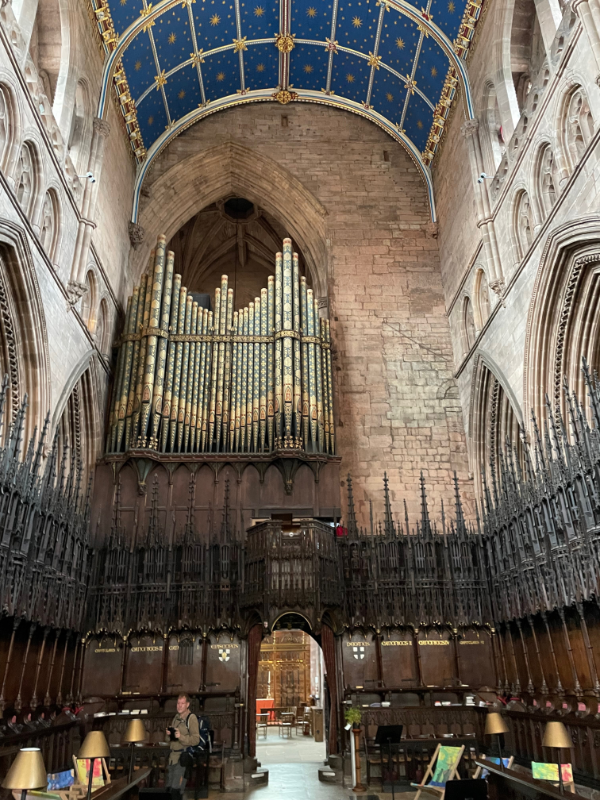
I feel like this end of the cathedral must have been remodelled at some point - hence the off-centre organ, but I couldn't find any information on it in the cathedral itself.
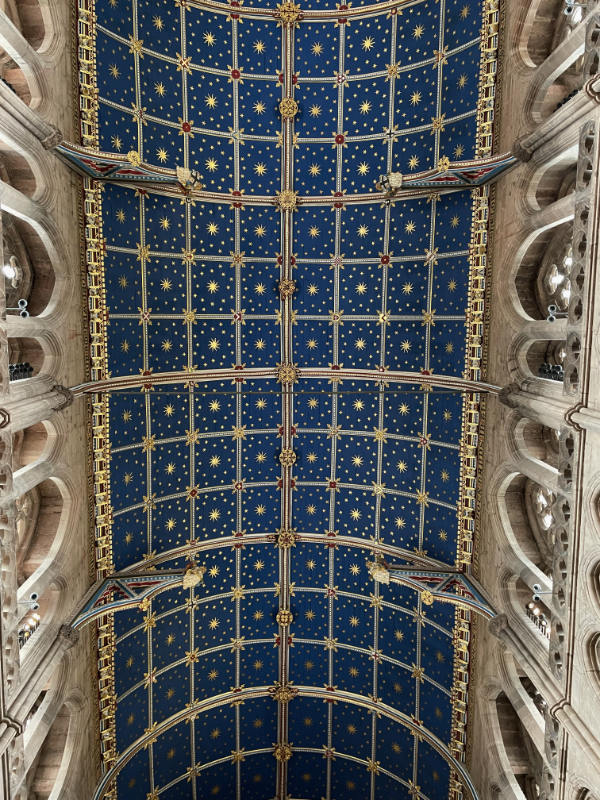
The roof was rather spectacular. You could hire a deck chair for an hour to sit and contemplate it, if you wished. I think it was performance art of some kind as well as just an opportunity to look at the roof.
Hadrian's Wall: Days 1 & 2
Dec. 29th, 2022 11:56 amHaving spent a week in Orkney, B and I then spent a week walking Hadrian's Wall in the opposite direction to the one we took in 2017, taking an extra day and skipping the Newcastle suburbs. Day 1 we walked from Boness on Solway to Carlisle. Boness had struck us as rather run down when we visited in 2017, but this time it felt more like a village in the process of gentrification - it had acquired an extra restaurant and cafe, and a smattering of smart cars. It was the tail end of a heat wave and while neither of us dehydrated we both drank a lot of water once we got to our hotel in Carlisle. The walk itself was rather dull. In 2017 the Solway Firth came at the end of a long day of walking and had a certain grandeur under overcast skies. At the start of a walk in the blazing sunshine the stretch of the walk alongside it seemed shorter and less significant. This part of the walk is mostly fields and villages - charming in its way but 17 miles of it was plenty. At Carlisle we got to walk along the river which we'd been unable to do in 2017 because it was under repair following floods.
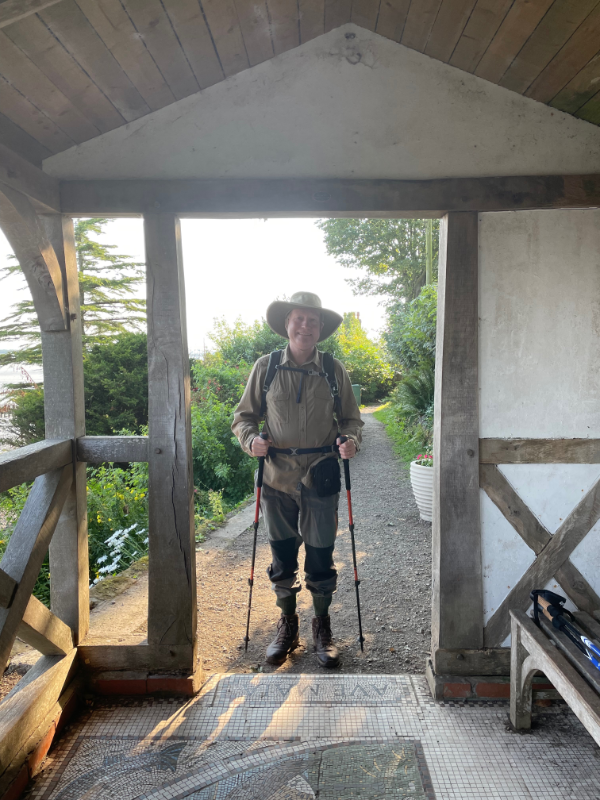
Anyway, here is B. at the very start of the walk.
Day 2 was much the same. We were walking a shorter distance so spent the morning sight-seeing in Carlisle (something we had skipped previously since we were walking 24 miles in one day and had no time) and then walked to Walton-on-the-Wall - setting quite a fast pace since rain was forecast late afternoon (though in the event it didn't arrive until into the night). The landscape was much the same - fields and villages and we somehow missed our first section of wall. At Walton we stayed in a bunkhouse with a donkey.
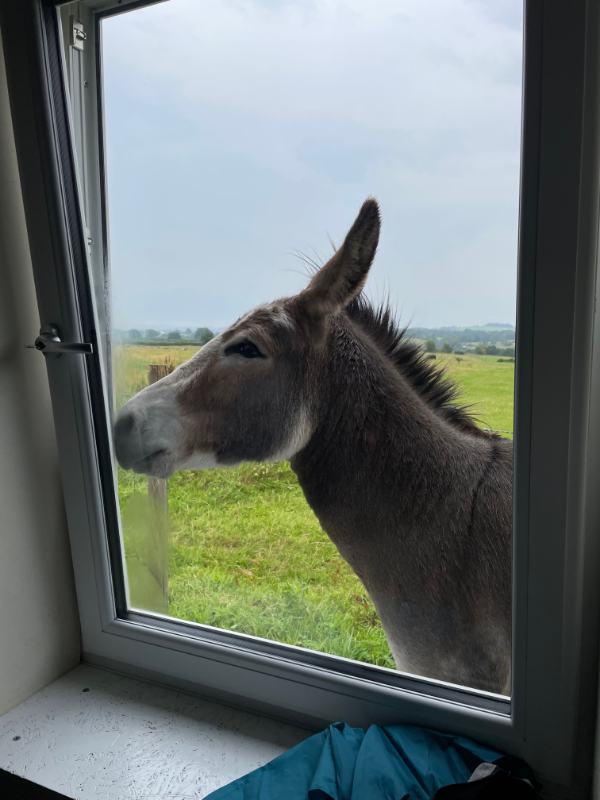

Anyway, here is B. at the very start of the walk.
Day 2 was much the same. We were walking a shorter distance so spent the morning sight-seeing in Carlisle (something we had skipped previously since we were walking 24 miles in one day and had no time) and then walked to Walton-on-the-Wall - setting quite a fast pace since rain was forecast late afternoon (though in the event it didn't arrive until into the night). The landscape was much the same - fields and villages and we somehow missed our first section of wall. At Walton we stayed in a bunkhouse with a donkey.

The Grain Earth House
Dec. 28th, 2022 11:45 amThe Grain Earth House is a souterrain (i.e., a somewhat unexplained hole in the ground possibly used to store food in order to keep it cool) on the outskirts of Kirkwall. When we first tried to visit it we found it to be on a corner in a rather unprepossessing industrial estate with a locked gate and sign that said the key could be got from Judith's Glue Shop in Kirkwall. Since we had just come from Kirkwall and had no real desire to attempt for the second time in one day to find parking spaces in the centre of town we elected to try again another day.
On our final day in Orkney we lunched in Kirkwall and so took the opportunity to visit the Glue Shop (it appeared to be a cross between a craft shop, a souvenir shop and a cafe opposite the cathedral) and sign out the key. Once we had the key there was a torch in a box by the entrance so we could admire the interior.
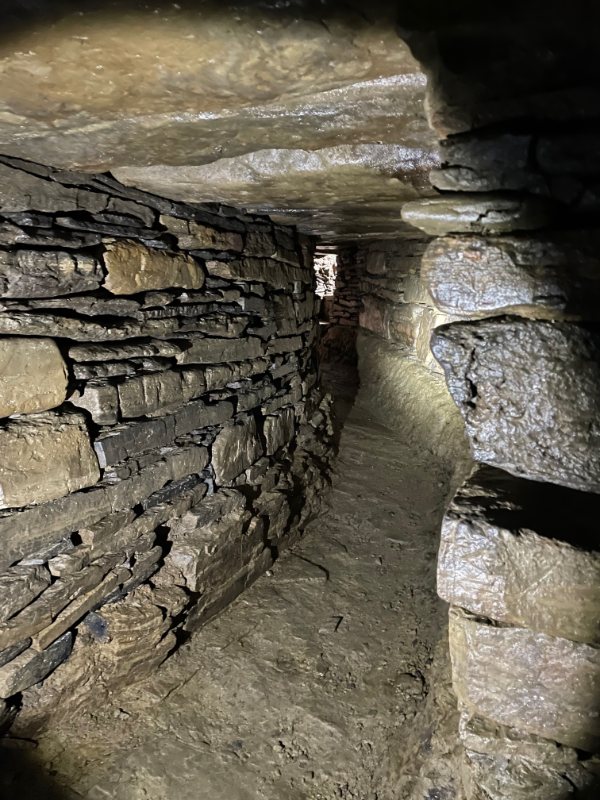
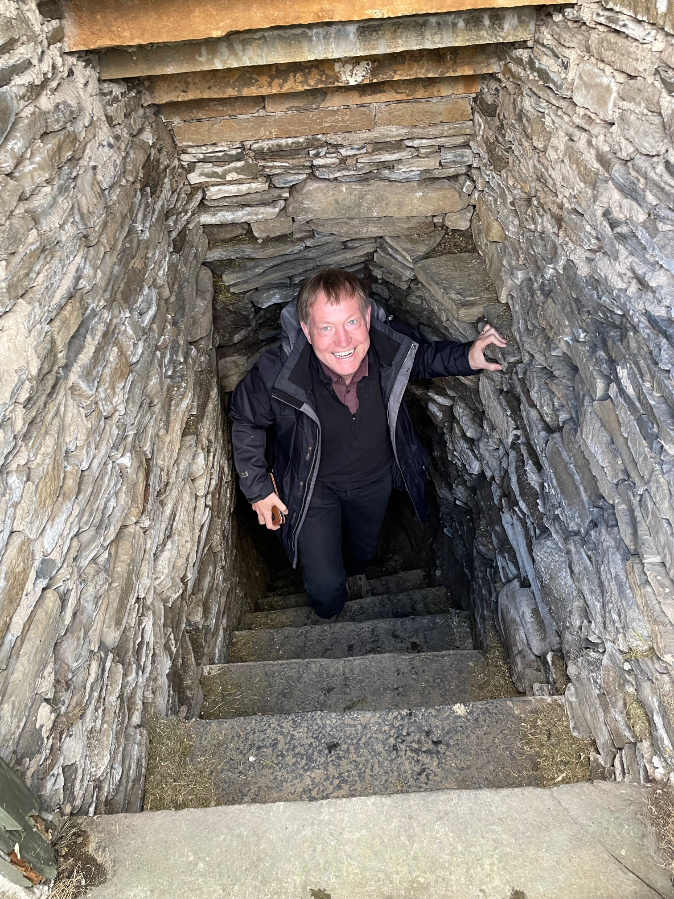
On our final day in Orkney we lunched in Kirkwall and so took the opportunity to visit the Glue Shop (it appeared to be a cross between a craft shop, a souvenir shop and a cafe opposite the cathedral) and sign out the key. Once we had the key there was a torch in a box by the entrance so we could admire the interior.


Highland Park Distillery
Dec. 24th, 2022 03:52 pmI'm so behind on posting summer holiday pictures. However I assume no one minds much...
Anyway no Scottish holiday would be complete without a visit to a distillery. We went for a tour and tasting of Highland Park, though we had rather more drivers and teenagers in the party than drinkers and ended up taking away a lot of small tasting bottles with us.
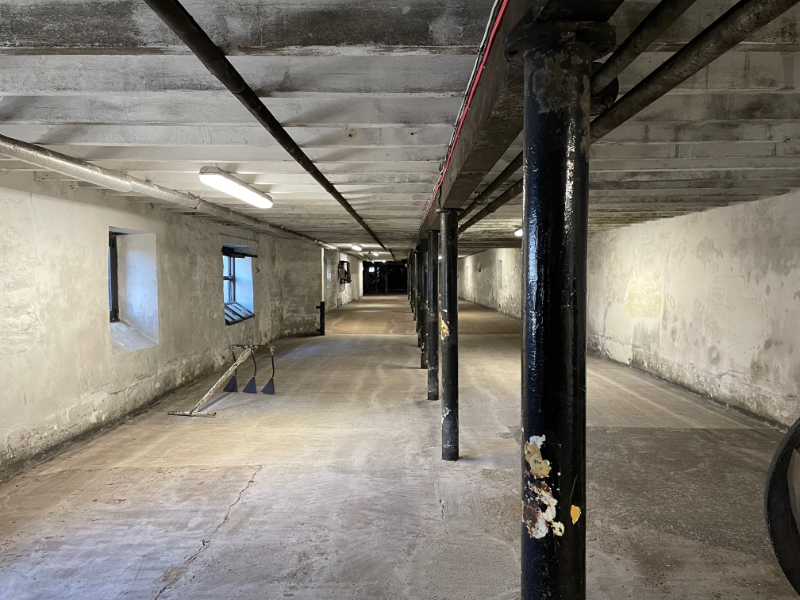
This is the malt floor where the barley is spread out and turned by hand for malting. No barley there when we went to see and it wasn't entirely clear to me how much of the barley that goes into Highland Park was actually hand turned on this malt floor.
 .
. 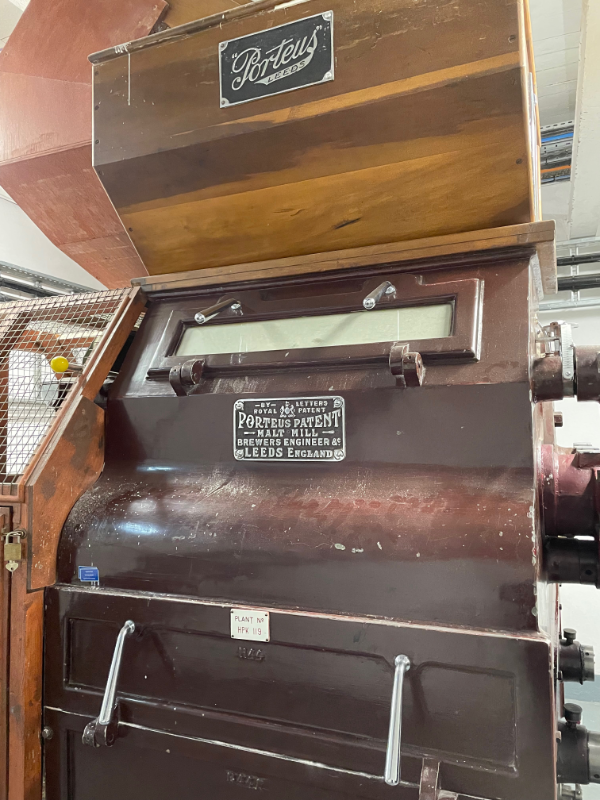
Apparently the Porteus company, makers of this Malt Mill have long been out of business having unfortunately made their products so well that they rarely break down. As far as I can gather you are now in trouble if you are a distillery where the malt mill has stopped working, since no one makes them any more.

And here is some actual whiskey, stored in a locked customs warehouse but with a window where we could look in to see it.
I found I rather liked Highland Park. Not as peaty as the whiskey's I normally drink but it slips down easier as a result.
Anyway no Scottish holiday would be complete without a visit to a distillery. We went for a tour and tasting of Highland Park, though we had rather more drivers and teenagers in the party than drinkers and ended up taking away a lot of small tasting bottles with us.

This is the malt floor where the barley is spread out and turned by hand for malting. No barley there when we went to see and it wasn't entirely clear to me how much of the barley that goes into Highland Park was actually hand turned on this malt floor.
 .
. 
Apparently the Porteus company, makers of this Malt Mill have long been out of business having unfortunately made their products so well that they rarely break down. As far as I can gather you are now in trouble if you are a distillery where the malt mill has stopped working, since no one makes them any more.

And here is some actual whiskey, stored in a locked customs warehouse but with a window where we could look in to see it.
I found I rather liked Highland Park. Not as peaty as the whiskey's I normally drink but it slips down easier as a result.
The Dwarfie Stane
Nov. 14th, 2022 09:08 pm
Having made good time walking to the Old Man of Hoy, B. and I thought there was time to visit the Dwarfie Stane before catching the ferry back to the mainland. The Dwarfie Stane was a short walk across some bog from the main (albeit single track) road. The stane is yet another neolithic burial chamber, but this one is unique in the UK in being carved out of a single sandstone rock.

In 1850 William Mounsey camped at the stone and graffiti'd the tomb by spelling his name backwards in Latin and then adding "I have sat two nights and so learnt patience" in Persian below because, I suppose, one might as well be snobbish if one is going to vandalise an ancient monument.

It was actually pretty cool inside. Very different from the other tombs with their built look.
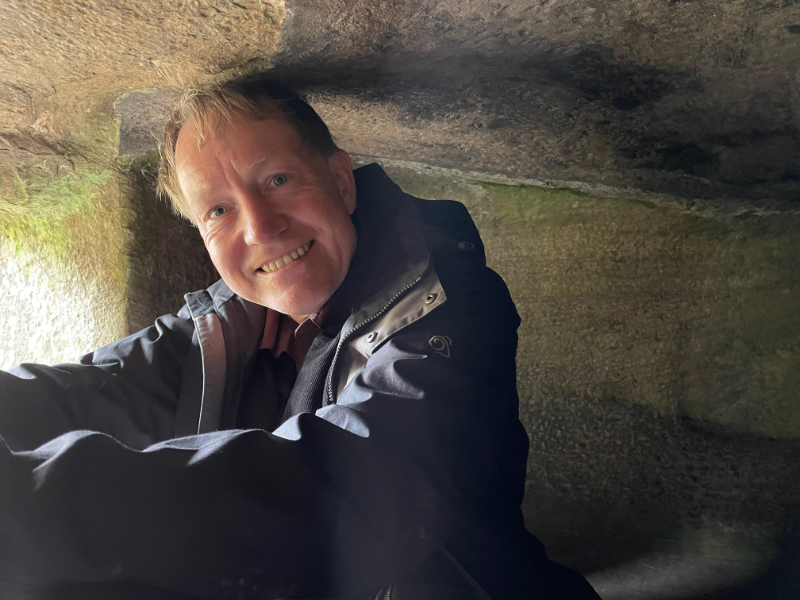
Unstan Chambered Cairn
Oct. 11th, 2022 08:20 pm
Our next stop on the road trip was Unstan Chambered Cairn. There was another low entrance so Ragnor opted to remain outside. However, unlike Maeshowe, there was no guide, no ban on photographs and no railings to stop you touching the archeology. It might be a minor tomb in Orkney terms, but was nevertheless pretty impressive inside with the partitioned main chamber and a smaller chamber to one side. The roof had been replaced, but at least that let in plenty of light.
 ( More under the cut )
( More under the cut )